Search Result
Results for "
chemical synthesis
" in MedChemExpress (MCE) Product Catalog:
48
Biochemical Assay Reagents
18
Isotope-Labeled Compounds
| Cat. No. |
Product Name |
Target |
Research Areas |
Chemical Structure |
-
- HY-W009169
-
|
BTDA
|
Others
|
Others
|
|
Benzophenonetetracarboxylic dianhydride is widely used in the synthesis of high-performance polyimides and other polymer materials. Benzophenonetetracarboxylic dianhydride reacts with various diamine compounds to form oligoimide chains. These oligimide chains can modify graphene oxide (Go) and enhance its properties .
|
-
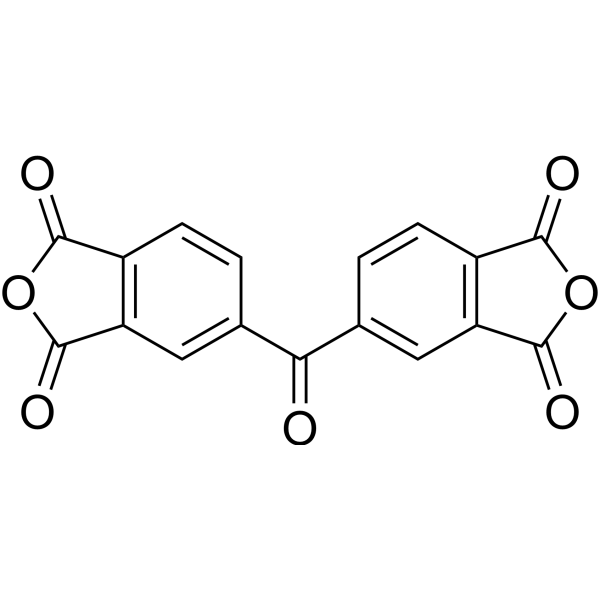
-
- HY-W035904
-
|
|
Others
|
Others
|
|
Tropone is a building block in the chemical synthesis .
|
-

-
- HY-132273
-
-
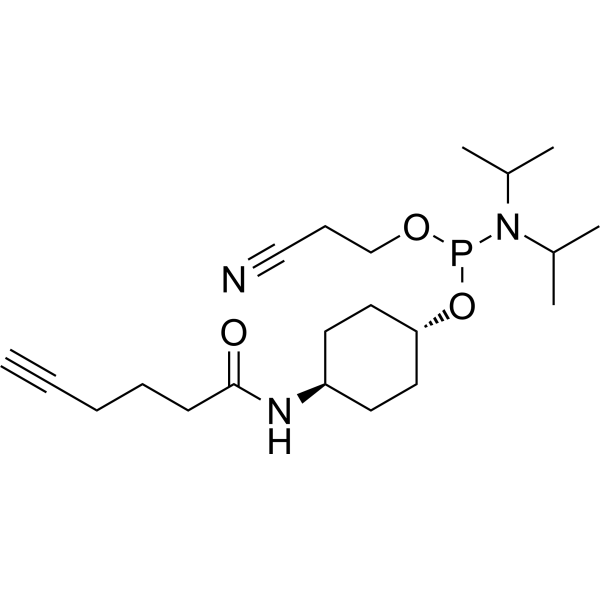
-
- HY-143242
-
|
|
Others
|
Others
|
|
Phidianidine B is a highly cytotoxic 1,2,4-oxadiazole marine metabolite. Phidianidine B is a natural product that can be isolated from a marine mollusk .
|
-
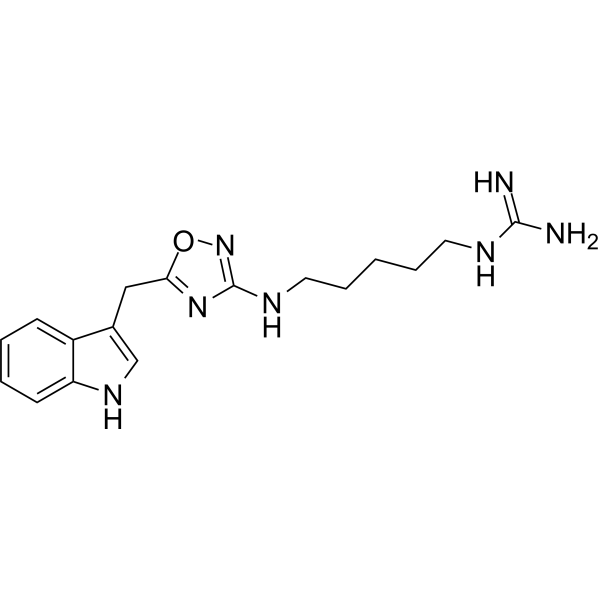
-
- HY-P5227
-
-
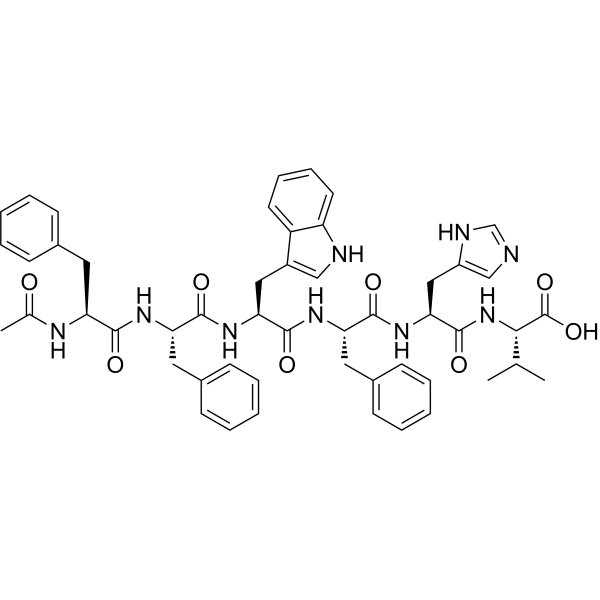
-
- HY-21626
-
|
p-Tolylboronic acid
|
Biochemical Assay Reagents
|
Others
|
|
4-Tolylboronic acid is an organoboron compound with important chemical applications. It can be used as an important intermediate in organic synthesis for the synthesis of organic compounds such as drugs, pesticides, and cosmetics, as well as for the research of coordination chemistry and material science. Due to its high chemical reactivity, 4-Tolylboronic acid has become a widely used reagent in organic synthesis.
|
-

-
- HY-Y0771
-
-
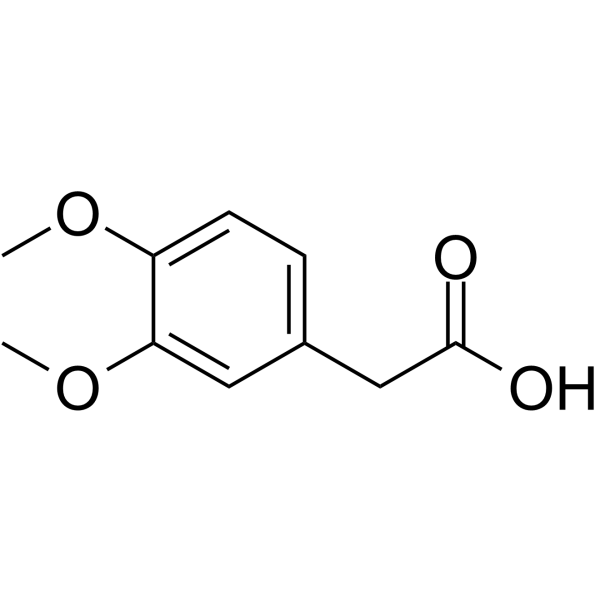
-
- HY-W011683
-
-
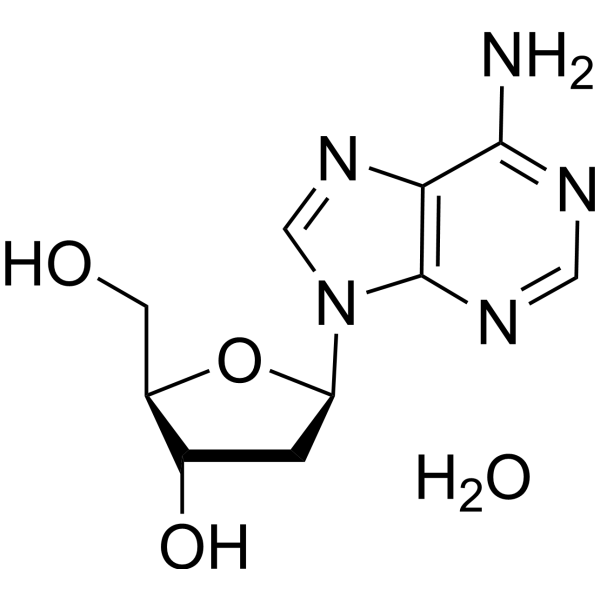
-
- HY-Y1298
-
|
Acetoacetate methyl ester; Methyl 3-oxobutanoate; Methyl acetoacetate
|
Endogenous Metabolite
|
Metabolic Disease
|
|
Methyl acetylacetate is a chemical reagent used in the synthesis of pharmaceuticals for the synthesis of α-substituted acetoacetate and cyclic compounds such as pyrazole, pyrimidine, and coumarin derivatives .
|
-

-
- HY-W002343
-
-
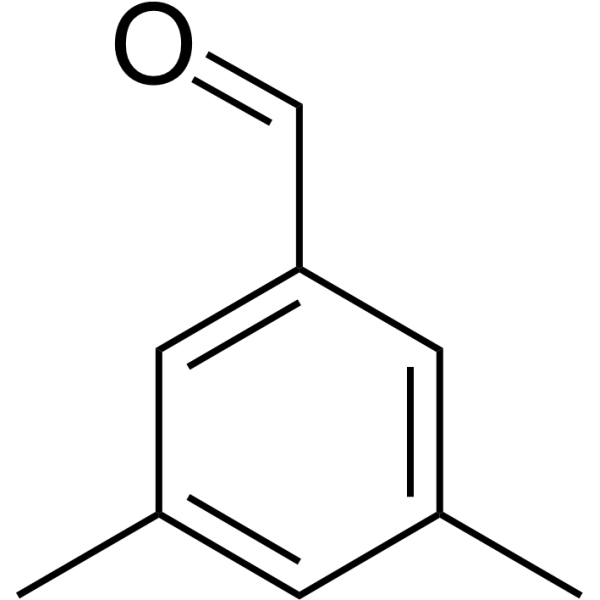
-
- HY-N7086
-
|
|
Others
|
Others
|
|
1,3,5-Trimethylpyrazole is a compound used for chemical synthesis .
|
-
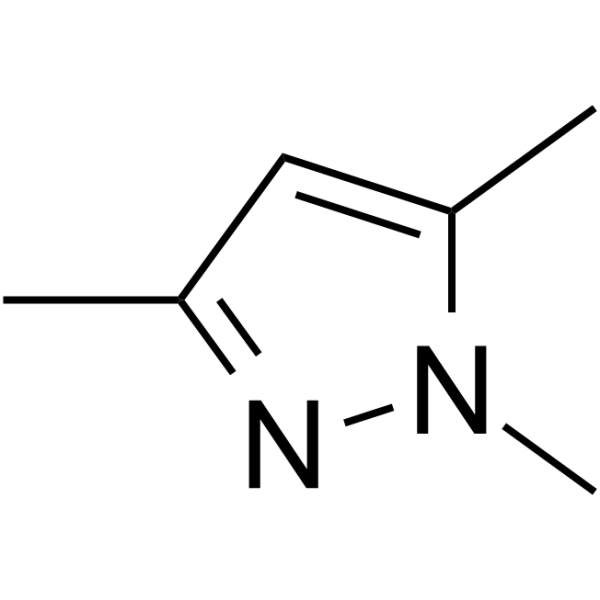
-
- HY-20003
-
|
|
Others
|
Others
|
|
(-)-Corey lactone benzoate is a building block in the chemical synthesis of corey aldehyde .
|
-

-
- HY-W008393
-
|
|
Others
|
Others
|
|
(-)-Corey lactone diol is a reduced version of corey aldehyde. A building block in the chemical synthesis.
|
-
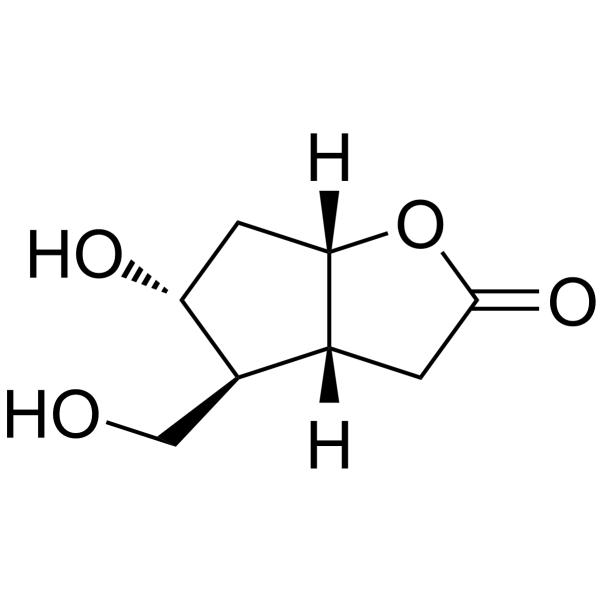
-
- HY-W041194
-
|
DL-Tropic acid
|
Others
|
Others
|
|
Tropic acid (DL-Tropic acid) is a laboratory reagent used in the chemical synthesis of Atropine and Hyoscyamine .
|
-
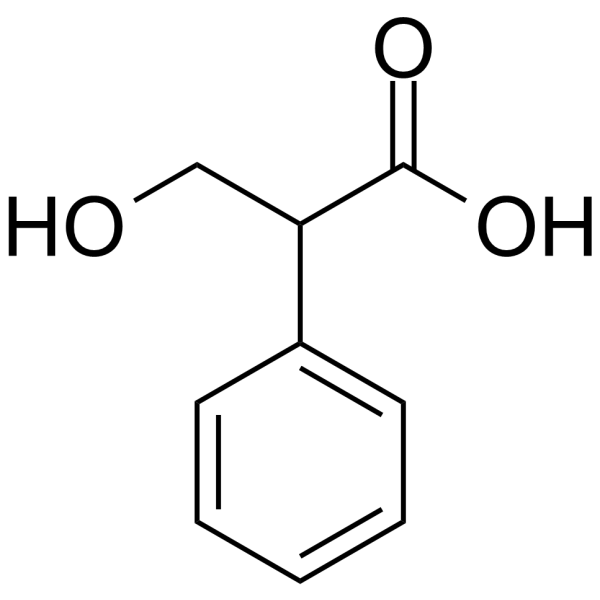
-
- HY-W011683S
-
-
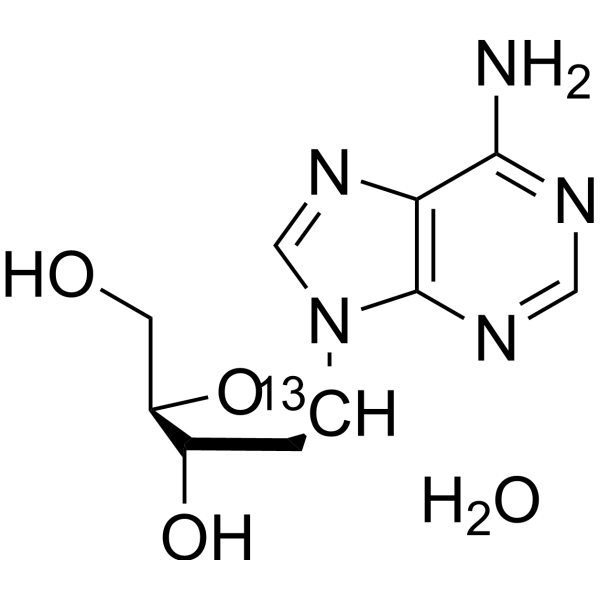
-
- HY-W011683S1
-
-

-
- HY-W011683S2
-
-
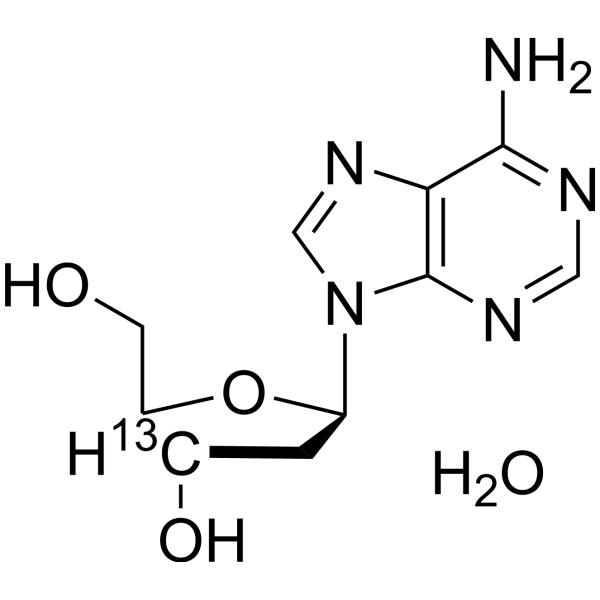
-
- HY-W011683S3
-
-

-
- HY-Y0421
-
|
2-Adamantone; 2-Oxoadamantane
|
Others
|
Others
|
|
Adamantanone (2-Adamantone) is a bioactive chemical, and can be used for the synthesis of active compound .
|
-

-
- HY-W012815
-
|
|
Others
|
Others
|
|
3-Methylcatechol is a building block in the chemical synthesis produced by Pseudomonas putida MC2 .
|
-
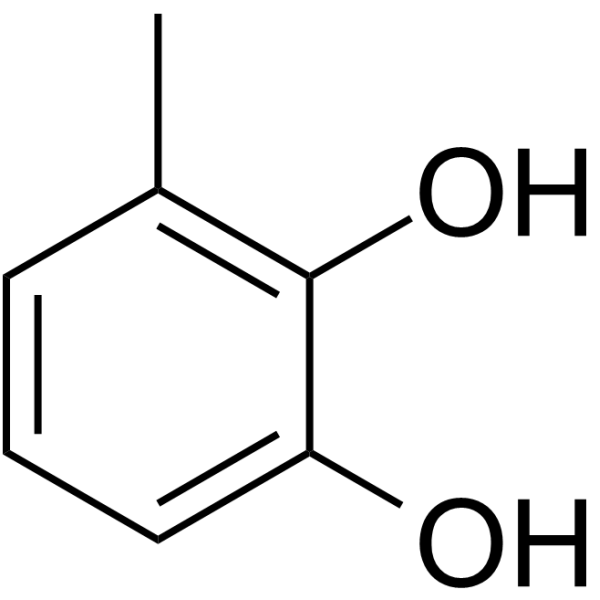
-
- HY-W004801
-
|
|
Others
|
Others
|
|
Benzofuran-3-carbaldehyde is a bioactive chemical, and can be used for the synthesis of active compound .
|
-
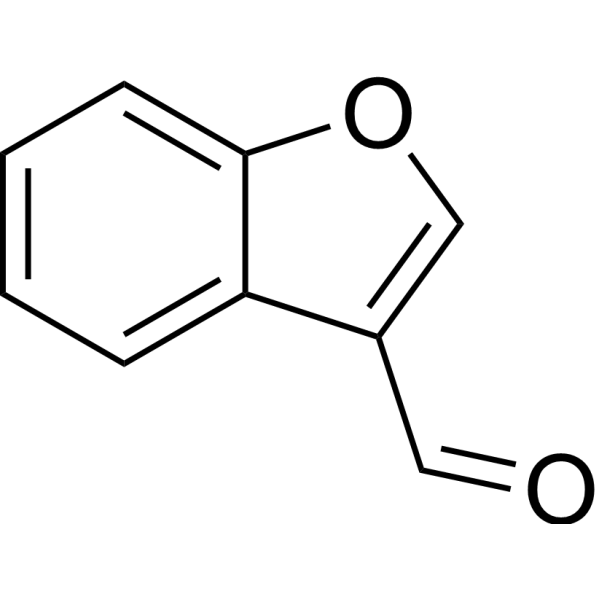
-
- HY-Y0771S
-
|
|
Endogenous Metabolite
|
Others
|
|
3,4-Dimethoxyphenylacetic acid-d2 is the deuterium labeled 3,4-Dimethoxyphenylacetic acid[1]. 3,4-Dimethoxyphenylacetic acid is a building block in the chemical synthesis[2].
|
-
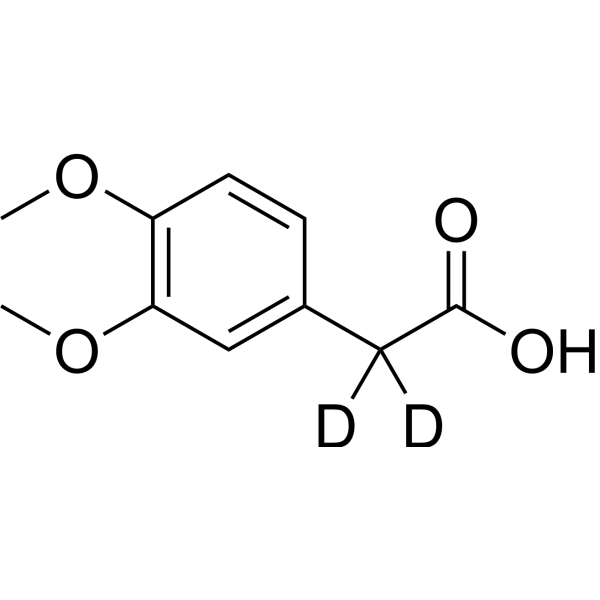
-
- HY-157918
-
|
20-(16-Mercaptohexadecanyloxy)-3,6,9,12,15,18-hexaoxaeicosanoic acid
|
Biochemical Assay Reagents
|
Others
|
|
Carboxy-EG6-hexadecanethiol is a biochemical assay reagent and can be used for chemical synthesis .
|
-

-
- HY-145149
-
|
|
ADC Cytotoxin
|
Cancer
|
|
Duostatin 5 is a cytotoxin designed based on dolastatin, can meet the requirement of serving as an effective cytotoxin in ADC, but has the advantages of fewer synthesis steps, easy operation, less difficulty in quality control and more stable chemical synthesis process .
|
-
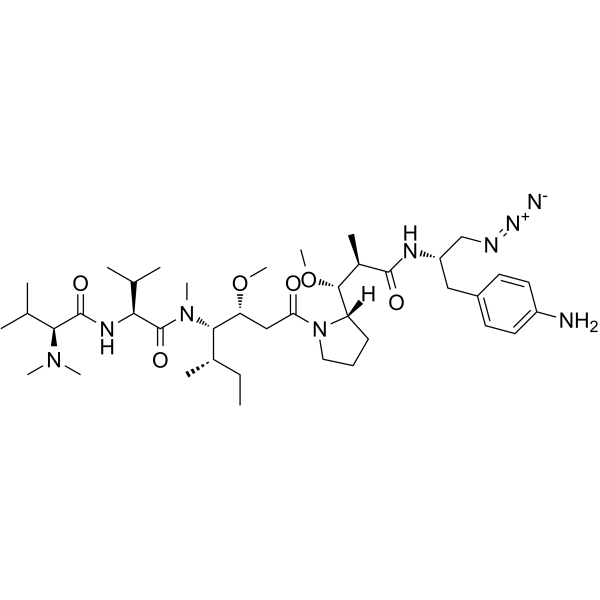
-
- HY-Y1298R
-
|
Acetoacetate methyl ester (Standard); Methyl 3-oxobutanoate (Standard); Methyl acetoacetate (Standard)
|
Endogenous Metabolite
|
Metabolic Disease
|
|
Methyl acetylacetate (Standard) is the analytical standard of Methyl acetylacetate. This product is intended for research and analytical applications. Methyl acetylacetate is a chemical reagent used in the synthesis of pharmaceuticals for the synthesis of α-substituted acetoacetate and cyclic compounds such as pyrazole, pyrimidine, and coumarin derivatives .
|
-
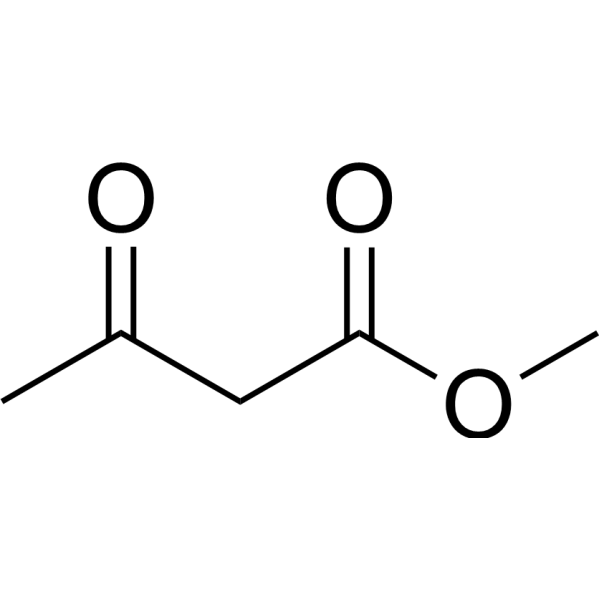
-
- HY-W001194
-
|
1,1-Dioxoisothiazolidine
|
Others
|
Others
|
|
1,3-Propanesultam (1,1-Dioxoisothiazolidine) is a bioactive chemical, and can be used for the synthesis of active compound .
|
-
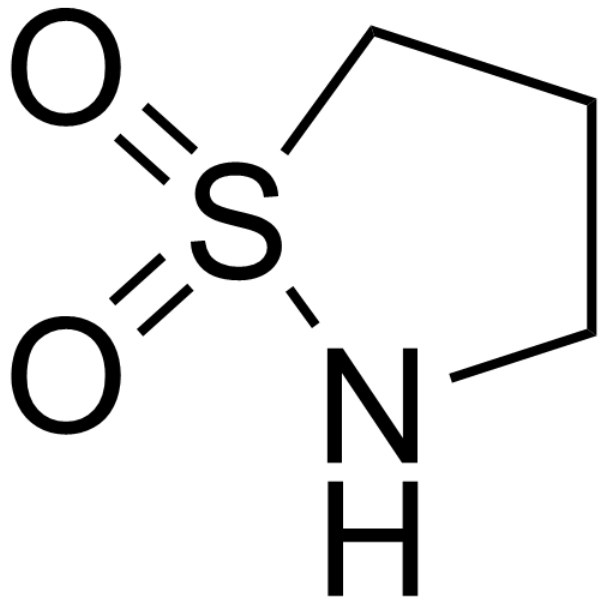
-
- HY-30236
-
|
|
Others
|
Cancer
|
|
5-Bromoindole is a chemical intermediate that can be used for the synthesis of GSK-3 inhibitors and anti-cancer agents .
|
-
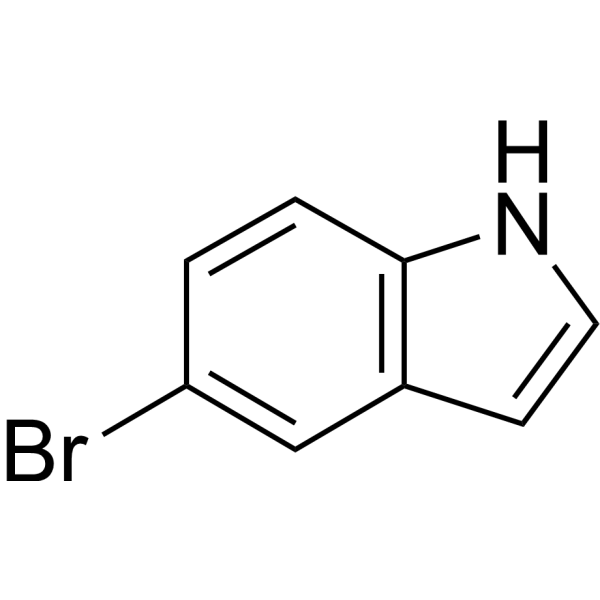
-
- HY-Y0247
-
|
6-Chloro-9H-purine
|
Others
|
Cancer
|
|
6-Chloropurine is a building block in chemical synthesis. Intermediate in the preparation of 9-alkylpurines and 6-rnercaptopurine. Antitumor activities .
|
-
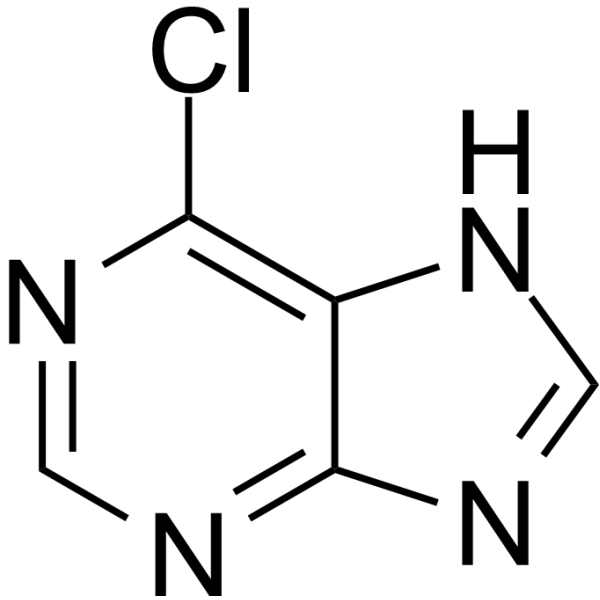
-
- HY-Y0989
-
|
1-Phenylethan-1-One
|
Others
|
Others
|
|
Acetophenone (1-Phenylethan-1-One) is an organic compound with simple structure. Acetophenone can be used in chemical synthesis .
|
-
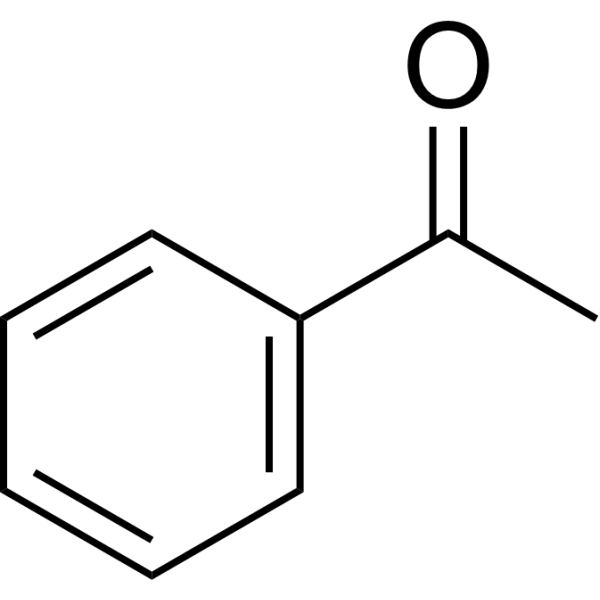
-
- HY-W040471
-
|
|
Others
|
Others
|
|
3′,5′-Dimethoxyacetophenone is a natural ketone compound with antioxidant activities. 3′,5′-Dimethoxyacetophenone is a building block in the chemical synthesis .
|
-

-
- HY-W094581
-
|
|
Biochemical Assay Reagents
|
Others
|
|
Gold (III) chloride trihydrate is a reducing agent. Gold (III) chromium trihydrate can be used for chemical synthesis of gold nanoparticles (NP) and spirochromene derivatives .
|
-
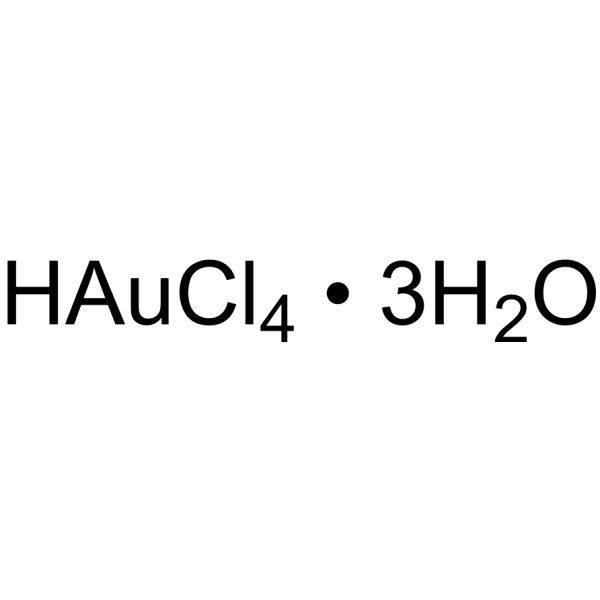
-
- HY-20587
-
|
|
CRAC Channel
|
Inflammation/Immunology
|
|
CRAC intermediate 1 is a key intermediate in the chemical synthesis of a series of CRAC channel inhibitors, detailed information can be found in Patent WO 2010122089 A1, intermediate 9.
|
-

-
- HY-W011048
-
|
BisOPP-A
|
Others
|
Others
|
|
2,2-Bis(3-phenyl-4-hydroxyphenyl)propane (BisOPP-A) is a bioactive chemical, and can be used for the synthesis of active compound .
|
-
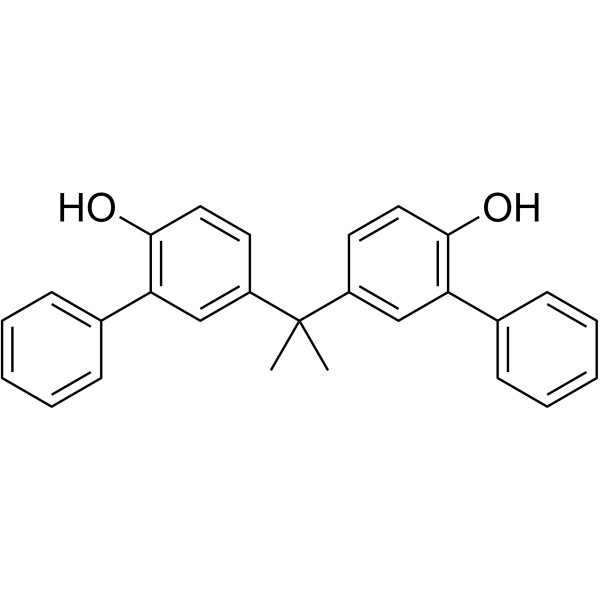
-
- HY-B0152S
-
|
6-Aminopurine-d1; Vitamin B4-d1
|
DNA/RNA Synthesis
Endogenous Metabolite
|
Cancer
|
|
Adenine-d is the deuterium labeled Adenine. Adenine (6-Aminopurine), a purine, is one of the four nucleobases in the nucleic acid of DNA. Adenine acts as a chemical component of DNA and RNA. Adenine also plays an important role in biochemistry involved in cellular respiration, the form of both ATP and the cofactors (NAD and FAD), and protein synthesis[1][2][3].
|
-

-
- HY-W011683S7
-
|
|
Endogenous Metabolite
|
Others
|
|
2'-Deoxyadenosine monohydrate- 15N5 is the 15N labeled 2'-Deoxyadenosine monohydrate[1]. 2'-Deoxyadenosine monohydrate is a deoxyribonucleoside. A building block in the chemical synthesis.
|
-

-
- HY-W010394
-
|
|
Biochemical Assay Reagents
|
Others
|
|
Methyl 3-oxopentanoate, which is also known as diethyl acetylmalonate or MEAM, Methyl 3-oxopentanoate is commonly used as a building block for the synthesis of various organic compounds, including pharmaceuticals, agrochemicals, and flavorings, and it can also Used as a reagent in organic chemical reactions, especially the formation of carbon-carbon bonds through malonate synthesis, the researchers also investigated the potential use of Methyl 3-oxopentanoate in the development of chiral auxiliaries that can aid in the selection of Controlling the stereochemistry of chemical reactions.
|
-
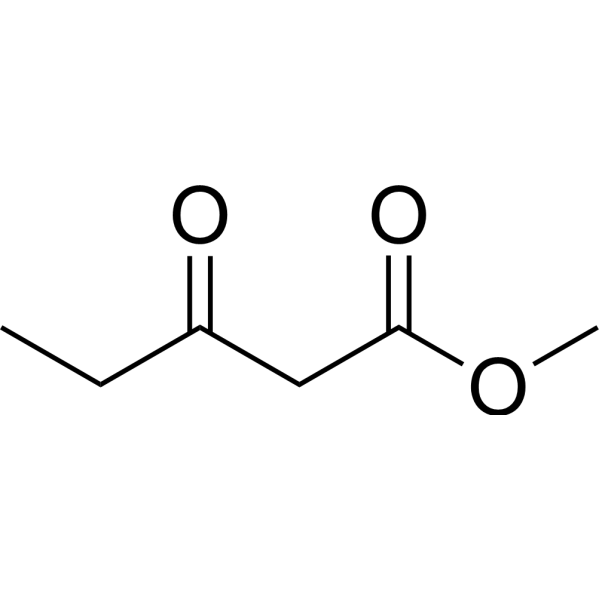
-
- HY-12396
-
|
2-Aminothiazole; 2-Thiazolylamine
|
Bacterial
Fungal
Virus Protease
|
Infection
|
|
Aminothiazole (2-Aminothiazole), a typical heterocyclic amine, is a precursor for the synthesis of biologically active molecules including sulfur agents, biocides, fungicides, antibiotics, dyes and chemical reaction accelerators .
|
-

-
- HY-D1853
-
|
|
Fluorescent Dye
|
Others
|
|
Sulfo-Cy5 carboxylic acid is a Cy5 derivative that can be used for chemical synthesis. Cy5 is a red fluorescent label dye for imaging (Ex/Em=642/670 nm) .
|
-

-
- HY-B0152S1
-
|
Adenine-8-C13; 9H-Purin-6-amine-8-13C
|
DNA/RNA Synthesis
Endogenous Metabolite
|
Cancer
|
|
Adenine- 13C is the 13C labeled Adenine[1]. Adenine (6-Aminopurine), a purine, is one of the four nucleobases in the nucleic acid of DNA. Adenine acts as a chemical component of DNA and RNA. Adenine also plays an important role in biochemistry involved in cellular respiration, the form of both ATP and the cofactors (NAD and FAD), and protein synthesis[2][3][4].
|
-

-
- HY-W325356
-
|
|
Others
|
Cancer
|
|
Tert-butyl 3,5-dinitrobenzoate is an intermediate or reactant in organic synthesis and can also play a role in drug synthesis, dye preparation and other chemical fields.The nitro functional group of Tert-butyl 3,5-dinitrobenzoate has certain reactivity in organic chemistry and can participate in various reactions, such as electrophilic substitution, aromatic amine reaction, etc .
|
-
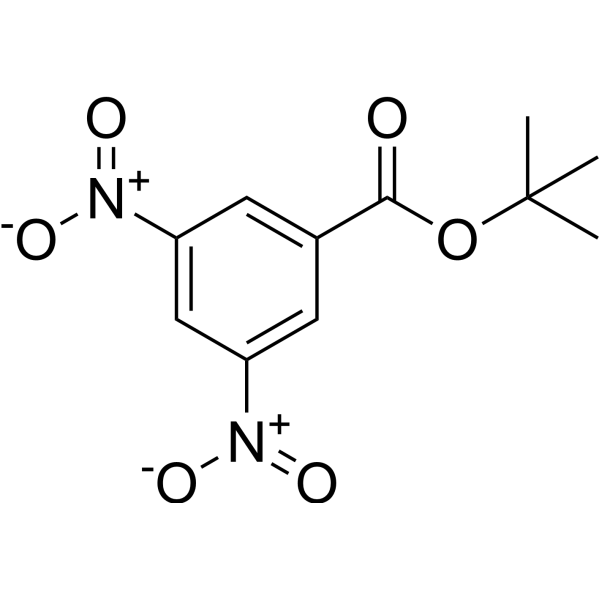
-
- HY-D1853A
-
|
|
Fluorescent Dye
|
Others
|
|
Sulfo-Cy5 carboxylic acid TEA is a Cy5 derivative that can be used for chemical synthesis. Cy5 is a red fluorescent label dye for imaging (Ex/Em=642/670 nm) .
|
-
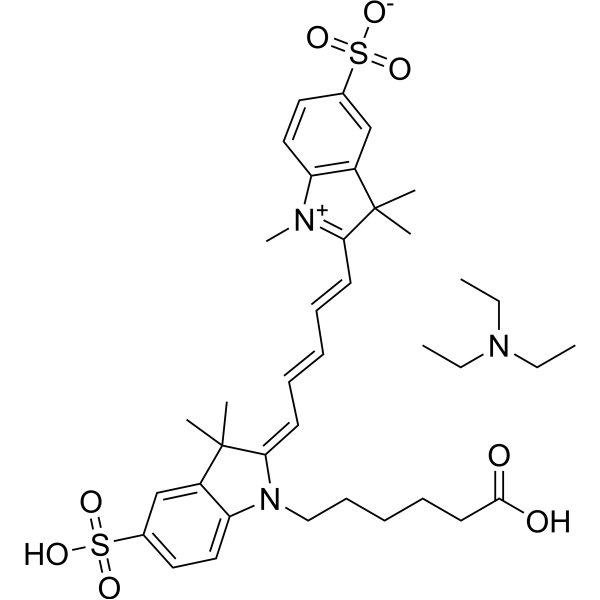
-
- HY-Y1881A
-
|
|
Biochemical Assay Reagents
|
Others
|
|
Copper sulfate pentahydrate, commonly used biochemical reagents. Copper sulfate pentahydrate, 99.9% indicates that it is almost entirely pure, making it suitable for uses in laboratory experiments, chemical synthesis, and some pharmaceutical applications.
|
-
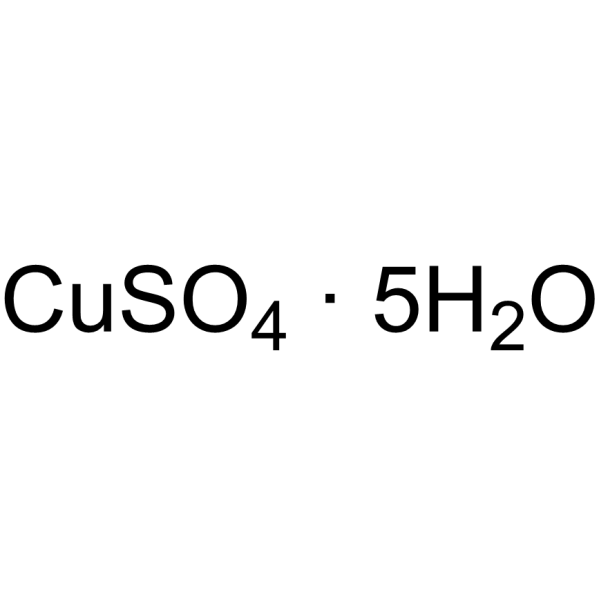
-
- HY-W099600
-
|
Bisdodecanoic anhydride
|
Biochemical Assay Reagents
|
Others
|
|
Lauric anhydride is a white waxy solid used as an intermediate in the production of various chemicals. It is primarily used in the synthesis of surfactants, emulsifiers, and lubricants, and as a raw material for other important industrial chemicals such as plasticizers and flavoring agents. It can be obtained from natural sources such as palm kernel oil and coconut oil, and its unique chemical structure allows it to be used to create compounds with specific surface and interfacial properties.
|
-

-
- HY-Y1045
-
|
TBAHS-MB
|
Biochemical Assay Reagents
|
Others
|
|
Tetrabutylammonium hydrosulfate is a quaternary ammonium salt that is commonly used as a phase transfer catalyst, acid catalyst and reagent in various chemical reactions, especially in organic synthesis. Tetrabutylammonium hydrosulfate has unique chemical properties that allow it to facilitate the transfer of ions or molecules from one phase to another, making it an important ingredient in a variety of industrial processes.
|
-
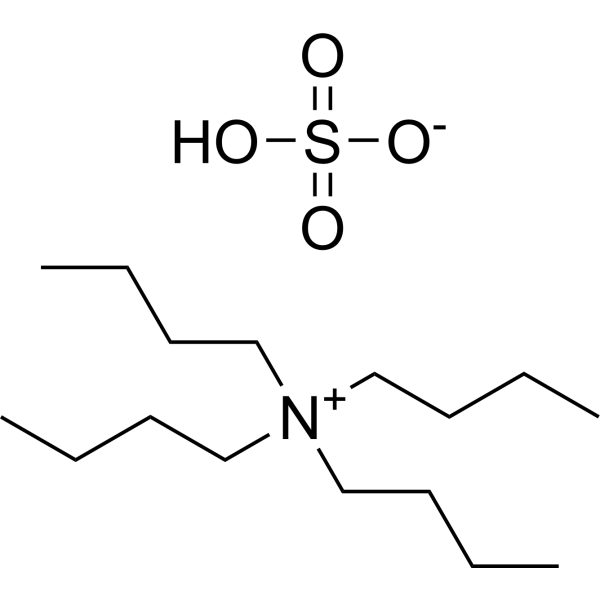
-
- HY-Y0335
-
|
Dihydroxyacetone
|
Endogenous Metabolite
|
Others
|
|
1,3-Dihydroxyacetone (DHA), the main active ingredient in sunless tanning skin-care preparations and an important precursor for the synthesis of various fine chemicals, is produced on an industrial scale by microbial fermentation of glycerol (HY-B1659) in Gluconobacter oxydans. 1,3-Dihydroxyacetone is also used for synthesis of new biodegradable polymers by combining with lactic acid (HY-B2227) .
|
-
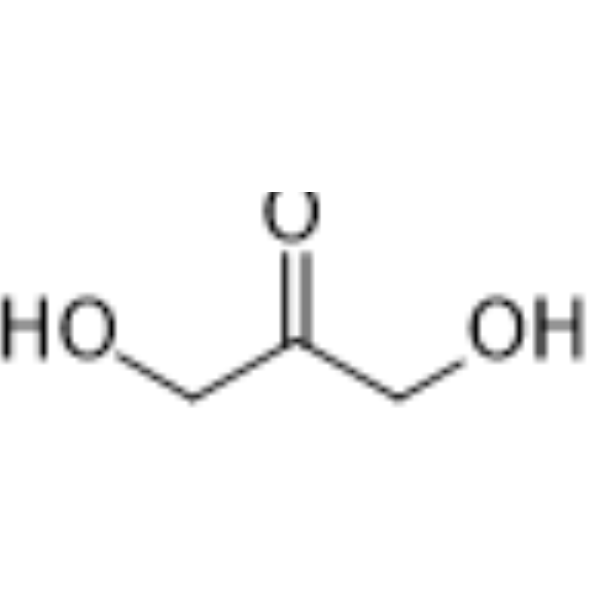
-
- HY-Y0080
-
|
|
Biochemical Assay Reagents
|
Others
|
|
Methyl trioctyl ammonium chloride is a quaternary ammonium salt commonly used as a surfactant, stabilizer and phase transfer catalyst in various chemical reactions, especially in organic synthesis. Methyl trioctyl ammonium chloride has unique chemical properties that facilitate the transfer of ions or molecules from one phase to another, making it an important ingredient in a variety of industrial processes.
|
-

-
- HY-B1434
-
|
7-ACA
|
Beta-lactamase
Bacterial
Antibiotic
|
Infection
|
|
7-aminocephalosporanic acid (7-ACA) is a HSP90β inhibitor and an antibiotic. 7-Aminocephalosporanic acid is the core chemical structure of the synthesis of cephalosporin antibiotics and an effective β-lactamase inhibitor .
|
-

-
- HY-W008635
-
|
|
Biochemical Assay Reagents
|
Others
|
|
Tetrabutylammonium tetrahydroborate is an organic compound commonly used as a reducing agent and catalyst. It can act as a reducing agent in certain chemical reactions and can promote the reduction of organic compounds such as esters, aldehydes and ketones. In addition, this compound is also widely used in organic synthesis and chemical analysis, and also has important uses in some production processes.
|
-
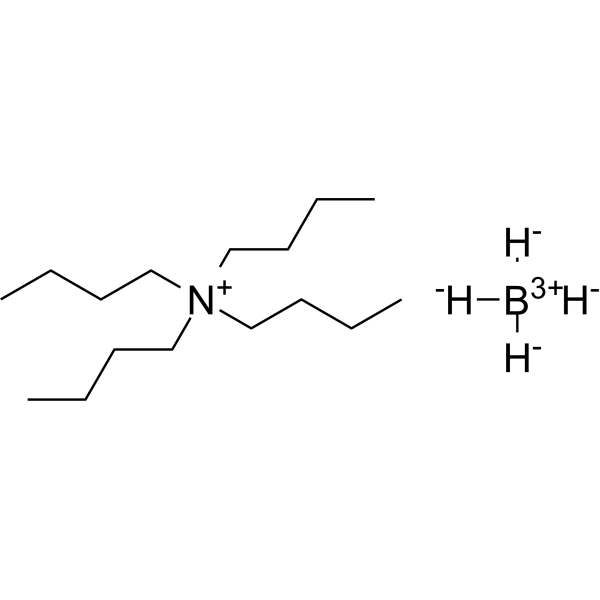
-
- HY-W036734
-
|
|
Biochemical Assay Reagents
|
Others
|
|
Tetrabutylammonium (hydrogen difluoride) is a quaternary ammonium salt containing fluoride ions. It is a highly active and effective reagent, often used in organic synthesis reactions, especially for the modification of organic molecules with fluorine atoms. Tetrabutylammonium (hydrogen difluoride) is also used as a catalyst for various chemical reactions such as esterification and transesterification. Additionally, it is used in the production of specialty chemicals such as surfactants and detergents.
|
-
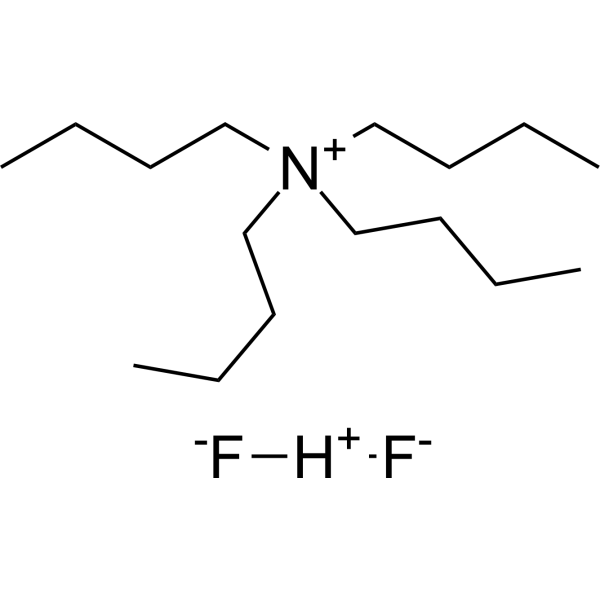
-
- HY-W011683S6
-
|
|
Endogenous Metabolite
|
Others
|
|
2'-Deoxyadenosine monohydrate- 13C10, 15N5 (hydrate) is the 13C and 15N labeled 2'-Deoxyadenosine monohydrate[1]. 2'-Deoxyadenosine monohydrate is a deoxyribonucleoside. A building block in the chemical synthesis.
|
-
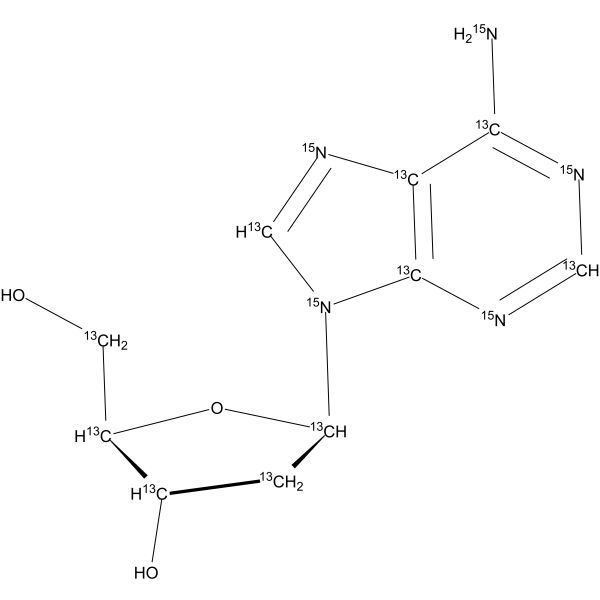
- HY-157924
-
|
Bis[(benzo-15-crowN-5)-4-methyl]pimelate
|
Biochemical Assay Reagents
|
Others
|
|
Bis(benzo-15-crown-5) (Bis[(benzo-15-crowN-5)-4-methyl]pimelate) is a biochemical assay reagent, and can be used for chemical synthesis .
|
-
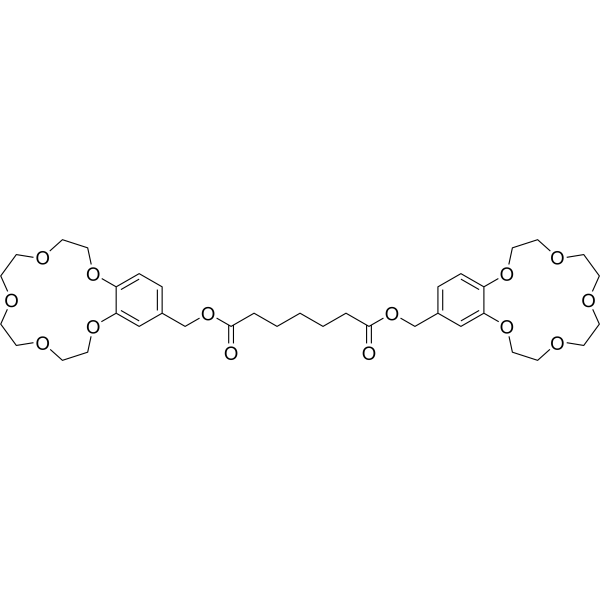
- HY-Y1426
-
|
o-Hydroxyacetophenone; o-Acetylphenol
|
Others
|
Others
|
|
2'-Hydroxyacetophenone is found in alcoholic beverages. 2'-Hydroxyacetophenone is present in tomato, cassia, fried beef, rum, whiskey, cocoa, coffee and black tea. 2'-Hydroxyacetophenone is a flavouring ingredient. Building block in chemical synthesis.
|
-
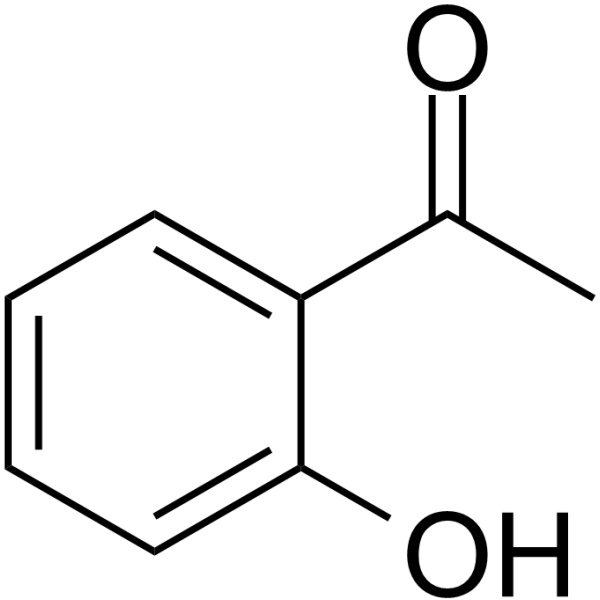
- HY-34717
-
|
Tetra-n-butylammonium tetrafluoroborate
|
Biochemical Assay Reagents
|
Others
|
|
Tetrabutylammonium tetrafluoroborate is an inorganic salt commonly used in organic synthesis reactions and electrochemical applications. It is usually used as a catalyst or reagent, and is widely used in the field of organic synthesis, such as fluorination reaction, olefin addition and cyclization reaction, etc. In addition, it can also be used in electrochemical deposition and electroplating, and plays an important role in some electronic devices. Although it has no direct application in the medical field, it plays an important role in chemical research and industrial production.
|
-
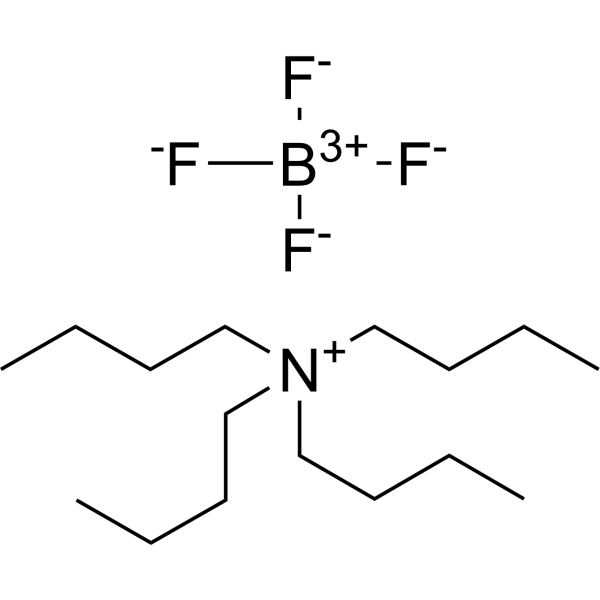
- HY-75920
-
|
|
Biochemical Assay Reagents
|
Others
|
|
Inhoffen Lythgoe diol is an organic molecule commonly used in chiral selective reactions in organic synthesis. It can be used as a catalyst and a ligand, and has a wide range of applications in the preparation of nitrogen- and sulfur-containing natural products, pharmaceuticals, and material science. Inhoffen Lythgoe diol plays a very important role in the field of asymmetric synthesis. Although it has no direct medical application, it plays an important role in the production and research of many important chemicals.
|
-
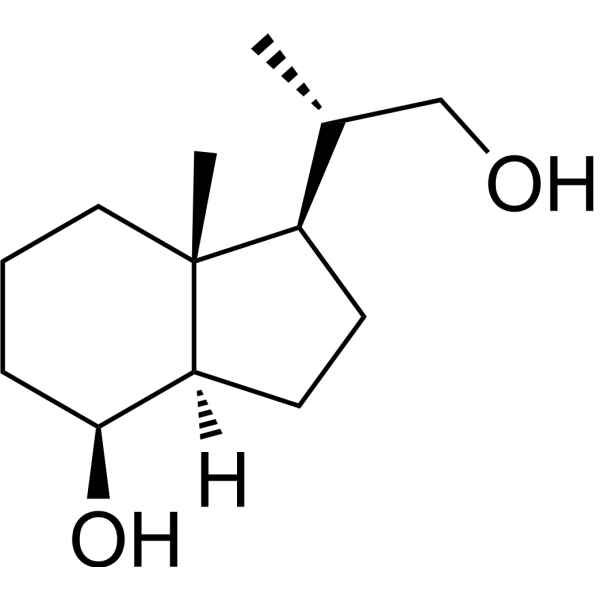
- HY-W112005
-
|
|
Biochemical Assay Reagents
|
Others
|
|
Benzyltrimethylammonium tetrachloroiodate is a quaternary ammonium salt belonging to the class of alkylammonium salts. The compound is used as a reagent in organic synthesis, especially in the oxidation of alkenes and alcohols. Its unique chemical properties make it an important ingredient in a variety of industrial processes, including pharmaceuticals and agrochemicals.
|
-

- HY-140345
-
|
|
PROTAC Linkers
|
Cancer
|
|
L-Homopropargylglycine is an alkyl chain-based PROTAC linker that can be used in the synthesis of PROTACs. L-homopropargylglycine is an amino acid analog of methionine containing an alkyne moiety that can undergo a classic click chemical reaction with azide containing Alexa Fluor .
|
-
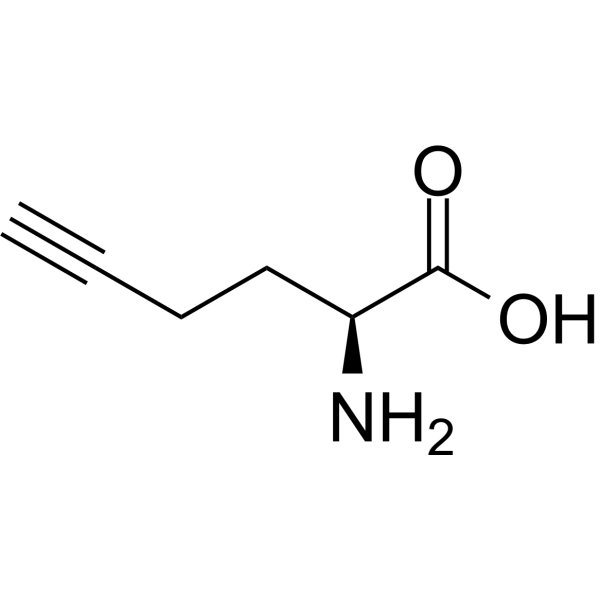
- HY-140345A
-
|
|
PROTAC Linkers
|
Cancer
|
|
L-Homopropargylglycine hydrochloride is an alkyl chain-based PROTAC linker that can be used in the synthesis of PROTACs. L-homopropargylglycine hydrochloride is an amino acid analog of methionine containing an alkyne moiety that can undergo a classic click chemical reaction with azide containing Alexa Fluor .
|
-
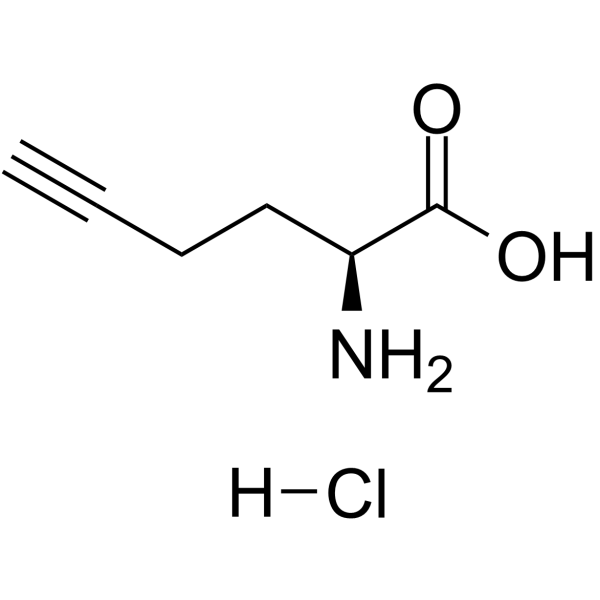
- HY-W018800
-
-

- HY-116954
-
|
|
DNA/RNA Synthesis
|
Others
|
|
Metribuzin is a low-cost non-selective herbicide that belongs to the chemical class of triazinones. Metribuzin hinders DNA synthesis in treated plants and acts on photosystem II, ultimately inhibiting photosynthesis. Metribuzin provides good control of important annual grass and broad-leaf weeds .
|
-
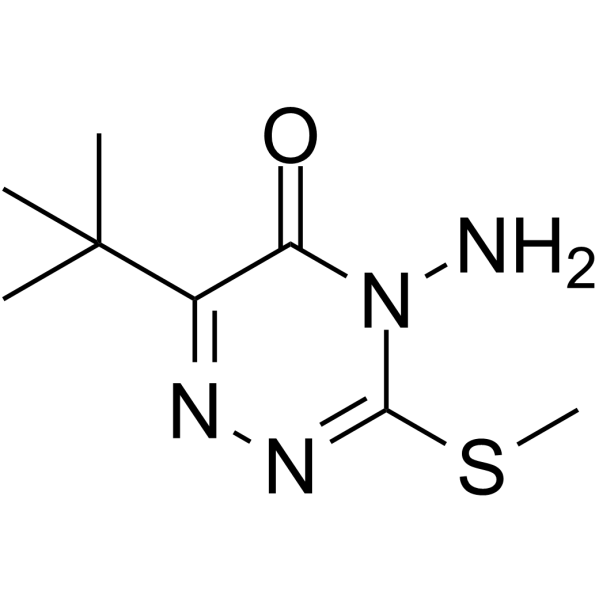
- HY-B0152
-
|
6-Aminopurine; Vitamin B4
|
DNA/RNA Synthesis
Endogenous Metabolite
|
Cancer
|
|
Adenine (6-Aminopurine), a purine, is one of the four nucleobases in the nucleic acid of DNA.
Adenine acts as a chemical component of DNA and RNA. Adenine also plays an important role in biochemistry involved in cellular respiration, the form of both ATP and the cofactors (NAD and FAD), and protein synthesis .
|
-
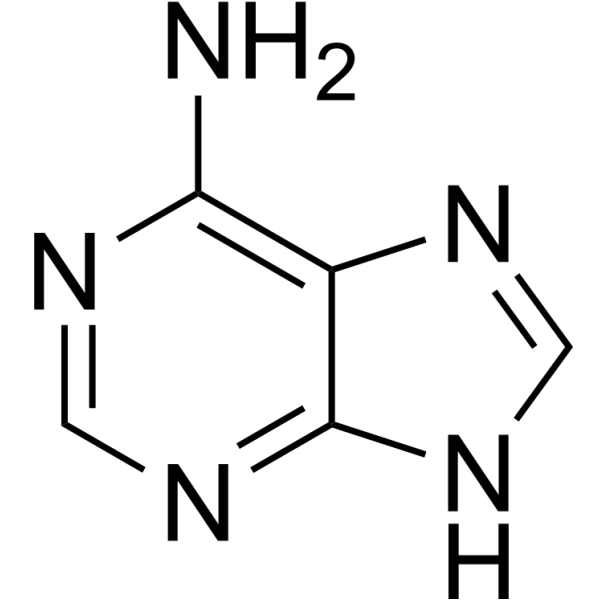
- HY-B0152A
-
|
6-Aminopurine hydrochloride; Vitamin B4 hydrochloride
|
DNA/RNA Synthesis
Endogenous Metabolite
|
Cancer
|
|
Adenine hydrochloride (6-Aminopurine hydrochloride), a purine, is one of the four nucleobases in the nucleic acid of DNA. Adenine hydrochloride acts as a chemical component of DNA and RNA. Adenine hydrochloride also plays an important role in biochemistry involved in cellular respiration, the form of both ATP and the cofactors (NAD and FAD), and protein synthesis .
|
-
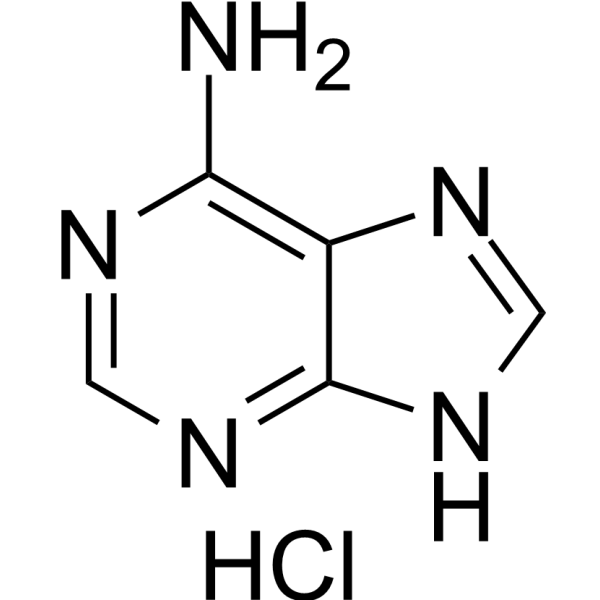
- HY-W008145
-
|
Sodium tetrachloropalladate(II) trihydrate
|
Biochemical Assay Reagents
|
Others
|
|
Sodium tetrachloropalladate(II) is an organic compound commonly used as a catalyst and as a raw material for dye production. It can be used to catalyze or promote reactions in certain chemical reactions, and is widely used in the fields of organic synthesis and dye preparation. In addition, the compound is also used for metallization, silver plating and electroplating of circuit boards.
|
-

- HY-W127671
-
|
|
Biochemical Assay Reagents
|
Others
|
|
Tetramethylammonium perchlorate is used as an intermediate in organic and chemical synthesis. It is used as mobile phase in HPLC analysis and quantification of olanzapine, clozapine and N-desmethylclozapine. It acts as a supporting electrolyte in the electrochemical reduction of 1-bromodecane, 1-iodododecane, 2-iodooctane, and 2-bromooctane on a mercury cathode.
|
-
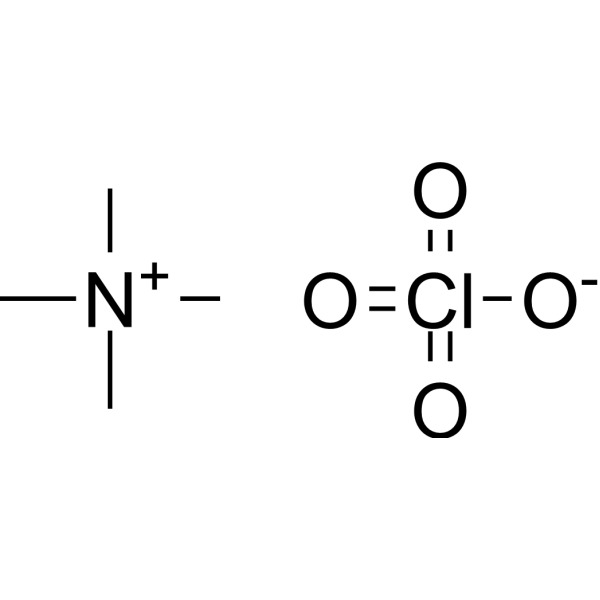
- HY-Y0415
-
|
N,N,N-triethylethanaminium (fluoride)
|
Biochemical Assay Reagents
|
Others
|
|
Tetraethylammonium fluoride is an organic compound containing both ammonium and fluorine functional groups. It is commonly used as a reagent in various chemical synthesis applications, especially as a source of fluoride ions for nucleophilic reactions. Tetraethylammonium fluoride has several properties that make it suitable for these applications, including its high solubility in polar solvents and its ability to selectively activate certain chemical bonds. In addition, it is used as a catalyst for organic reactions and as a surfactant in the production of semiconductors and microelectronics.
|
-

- HY-Y0971
-
|
TBAF
|
Biochemical Assay Reagents
|
Others
|
|
Tetrabutylammonium fluoride is an organic compound containing both ammonium and fluorine functional groups. It is commonly used as a reagent in various chemical synthesis applications, especially as a source of fluoride ions for nucleophilic reactions. Tetrabutylammonium fluoride has several properties that make it suitable for these applications, including its high solubility in polar solvents and its ability to selectively activate certain chemical bonds. In addition, it can be used as a catalyst for organic reactions and as an electrolyte for batteries.
|
-
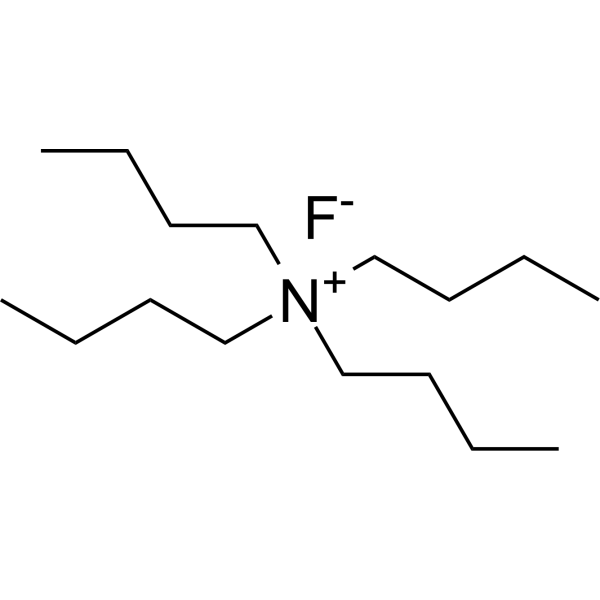
- HY-Y0949
-
|
Methyl furan-2-carboxylate
|
Endogenous Metabolite
|
Others
|
|
Methyl 2-furoate (Methyl furan-2-carboxylate) is a building block in chemical synthesis. A flavoring agent in food. Found in cranberries, guava fruits, raisins and other fruits. Also present in baked potato, roasted filberts, roasted peanut, tomatoes, coffee, cocoa, okra, etc.
|
-

- HY-B0152B
-
|
6-Aminopurine hemisulfate; Vitamin B4 hemisulfate
|
DNA/RNA Synthesis
Endogenous Metabolite
|
Cancer
|
|
Adenine hemisulfate (6-Aminopurine hemisulfate), a purine, is one of the four nucleobases in the nucleic acid of DNA. Adenine hemisulfate acts as a chemical component of DNA and RNA. Adenine hemisulfate also plays an important role in biochemistry involved in cellular respiration, the form of both ATP and the cofactors (NAD and FAD), and protein synthesis .
|
-
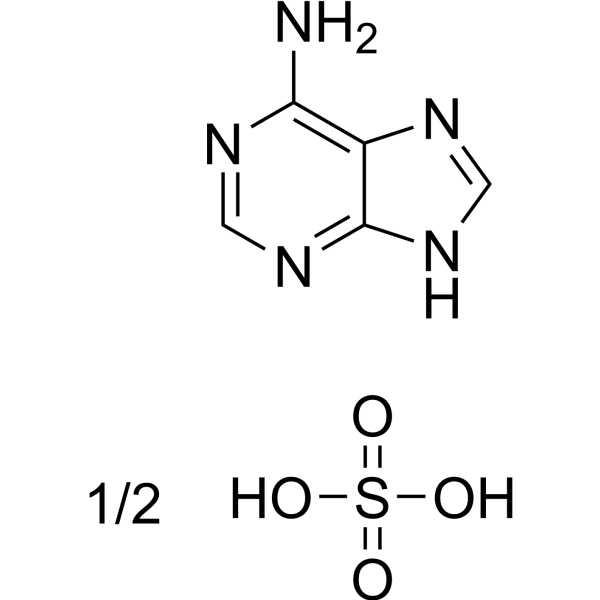
- HY-D0898
-
|
|
Biochemical Assay Reagents
|
Others
|
|
2,4-Dichlorobenzenediazonium tetrafluoroborate is an organic compound commonly used in organic synthesis and dye preparation reactions. It can be used as an azotating agent to form azo dyes with other organic substances, and can be used in coatings, pigments and paints and other industries. In addition, the compound is widely used in certain chemical analysis and detection methods, such as in scientific instruments such as electron microscopes and mass spectrometers. Although the compound has no direct medical applications, it plays an important role in chemical research and laboratory studies.
|
-
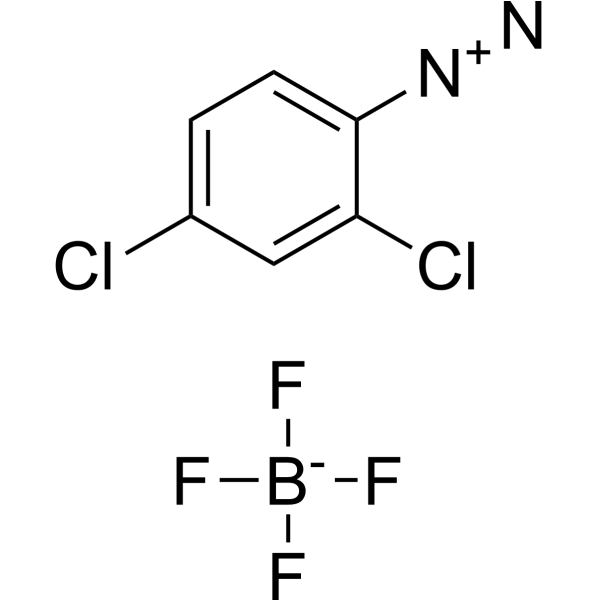
- HY-W040184
-
|
TMAHS
|
Biochemical Assay Reagents
|
Others
|
|
Tetramethylammonium hydrogensulfate, sometimes abbreviated as TMAHS, is a quaternary ammonium salt commonly used as a catalyst and phase transfer agent in chemical reactions, especially in organic synthesis. In addition, it is used as an electrolyte additive in electrochemical and rechargeable batteries. TMAHSs have also been investigated for their potential use in various applications such as wastewater treatment, gas separation, and fuel cells.
|
-

- HY-W099642
-
|
Trimethyl-n-octylammonium bromide
|
Biochemical Assay Reagents
|
Others
|
|
Trimethyloctylammonium bromide (TOAB) is used as a surfactant and phase transfer catalyst in various chemical reactions. TOAB can be used in the synthesis of nanomaterials due to its ability to selectively transfer ions across interfaces and as a surfactant in the production of emulsions and foams. It is valued for its amphiphilic properties, which allow it to interact with water and oils, stabilizing and dispersing mixtures.
|
-
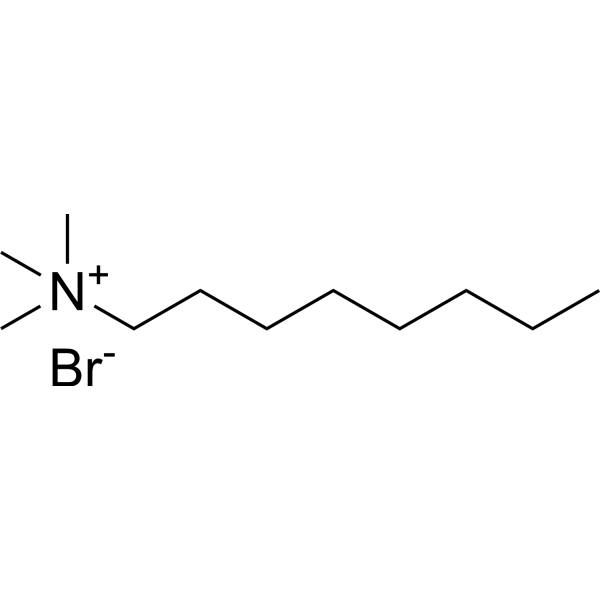
- HY-W109978
-
|
|
Biochemical Assay Reagents
|
Others
|
|
Tetrabutylammonium perrhenate is a quaternary ammonium salt belonging to the class of alkylammonium salts. This compound is used as a catalyst in organic synthesis, especially in the production of alkenes and alcohols. Furthermore, due to its ability to bind radioisotopes, it is useful as a radiopharmaceutical in nuclear medicine. Its unique chemical properties make it an essential ingredient in a variety of industrial processes, including petrochemical refining and pharmaceuticals.
|
-
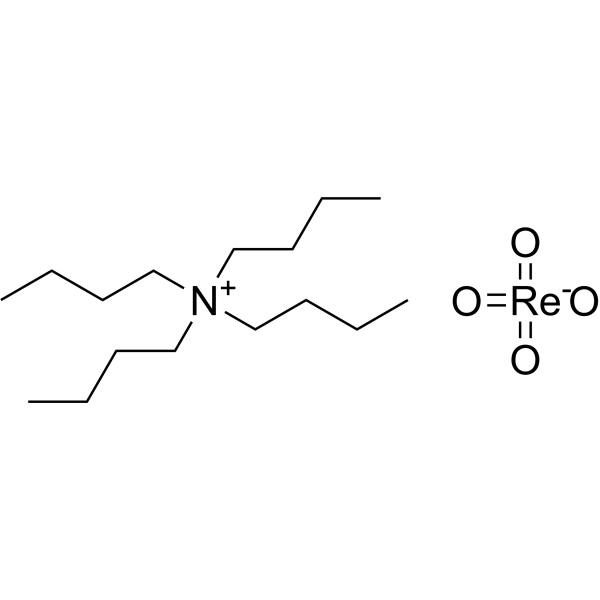
- HY-141166A
-
|
|
Biochemical Assay Reagents
|
Cancer
|
|
(S,E)-TCO2-PEG3-NHS ester is NH2 reactive, and can be used in chemical synthesis. (S,E)-TCO2-PEG3-NHS ester contains TCO groups, which can undergo specific "click" reactions with tetrazine groups .
|
-
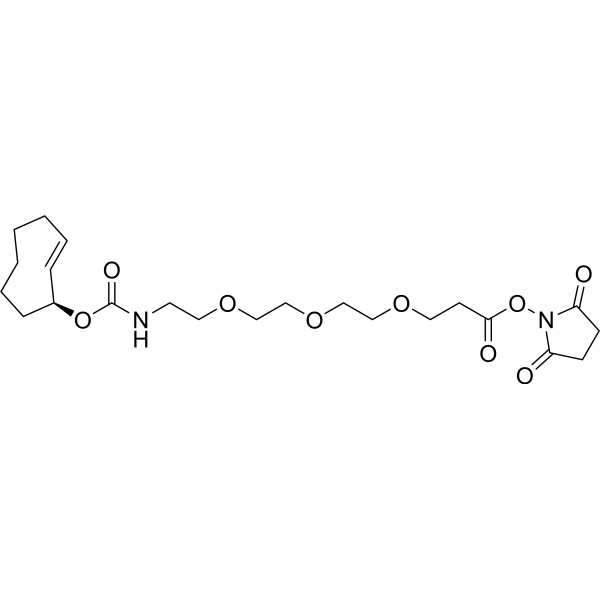
- HY-W142618
-
|
|
Biochemical Assay Reagents
|
Others
|
|
D-Glucal is an organic compound belonging to the family of aldoses, which are monosaccharides containing an aldehyde functional group. It has a six-carbon structure and is derived from glucose by oxidation of the primary alcohol group at carbon 1 to an aldehyde group. D-Glucal is a white crystalline solid that is soluble in water and has a sweet taste. It is an important intermediate in the chemical synthesis of a wide variety of compounds, including pharmaceuticals, agrochemicals, and natural products. D-Glucal can be converted into other carbohydrate derivatives such as glycosides, glycoconjugates and amino sugars. It also plays a role in the study of carbohydrate chemistry, where it is used as a chiral building block for the synthesis of complex structures.
|
-
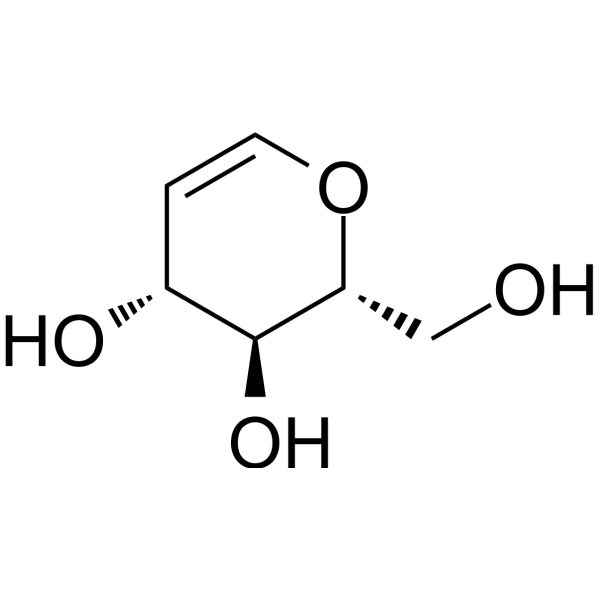
- HY-90006
-
5-Fluorouracil
Maximum Cited Publications
178 Publications Verification
5-FU
|
Nucleoside Antimetabolite/Analog
HIV
Apoptosis
Endogenous Metabolite
|
Cancer
|
|
5-Fluorouracil (5-FU) is an analogue of uracil and a potent antitumor agent. 5-Fluorouracil affects pyrimidine synthesis by inhibiting thymidylate synthetase thus depleting intracellular dTTP pools. 5-Fluorouracil induces apoptosis and can be used as a chemical sensitizer . 5-Fluorouracil also inhibits HIV .
|
-

- HY-B2151
-
|
Cerberigenin; Echujetin
|
Biochemical Assay Reagents
|
Others
|
|
Digitoxigenin is a steroid derivative commonly found in various plants, especially the foxglove plant (Digitalis purpurea). Digitoxigenin has unique chemical properties that make it an important precursor for the synthesis of cardiac glycosides, a group of drugs used to improve heart failure and certain types of arrhythmias. It works by inhibiting the sodium potassium ATPase pump, thereby increasing the force and efficiency of cardiac contractions.
|
-

- HY-W127344
-
|
|
Biochemical Assay Reagents
|
Others
|
|
Oleoyl chloride A pungent-smelling liquid commonly used as a reagent in organic synthesis, especially for the production of a variety of organic compounds, including pharmaceuticals and agrochemicals. In addition, it can also be used as a cross-linking agent or surfactant in polymer chemistry. Its unique chemical properties make it an important ingredient in a variety of industrial processes, including petrochemical refining and materials science.
|
-
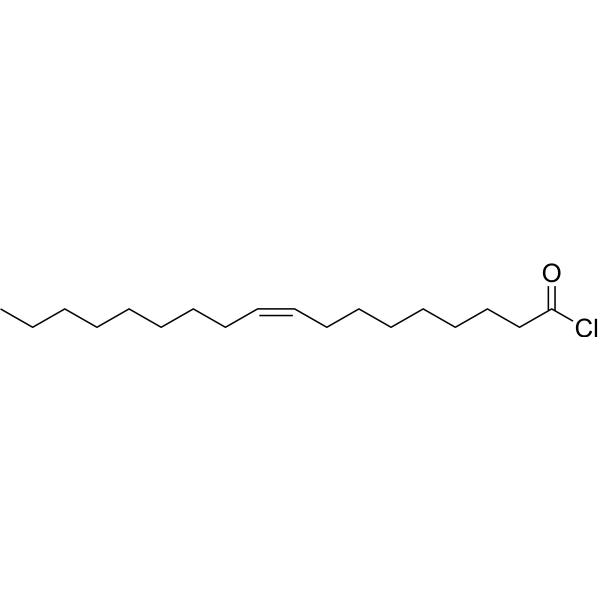
- HY-124418
-
|
|
Others
|
Metabolic Disease
|
|
SBI-477 is a chemical probe stimulated insulin signaling by deactivating the transcription factor MondoA, leading to reduced expression of the insulin pathway suppressors thioredoxin-interacting protein (TXNIP) and arrestin domain–containing 4 (ARRDC4). SBI-477 coordinately inhibits triacylglyceride (TAG) synthesis and enhances basal glucose uptake in human skeletal myocytes .
|
-
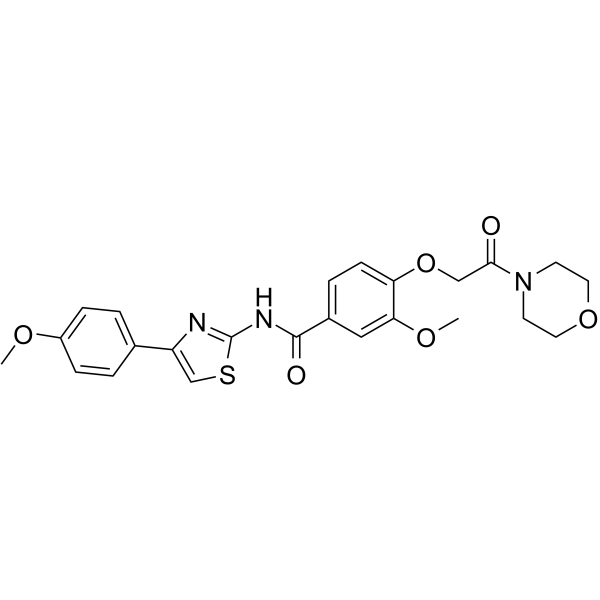
- HY-W105734
-
|
|
Biochemical Assay Reagents
|
Others
|
|
15-Hydroxypentadecanoic acid is a long-chain fatty acid found in various plant and animal sources and also produced by bacteria and fungi. It has potential health benefits and is used as an intermediate in the synthesis of other organic compounds, including pharmaceuticals, agrochemicals and surfactants. Its unique chemical properties make it an essential ingredient in several industrial processes, especially in the fields of food science and nutrition.
|
-
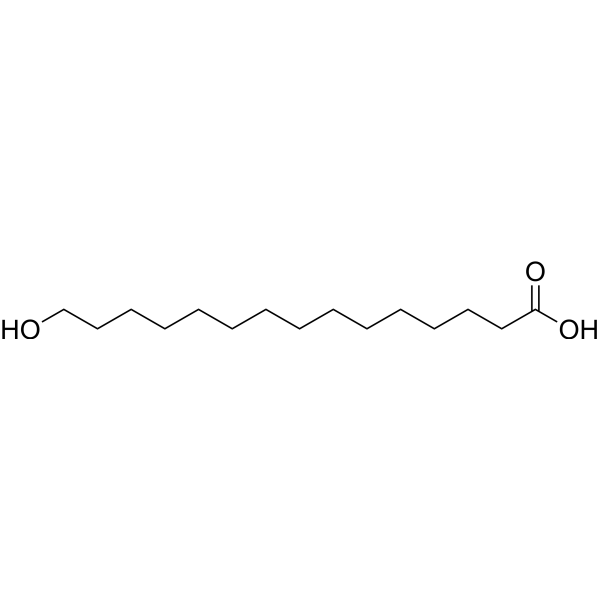
- HY-W014408
-
|
TEA bromide
|
Biochemical Assay Reagents
|
Others
|
|
Tetraethylammonium bromide is a quaternary ammonium salt consisting of a positively charged tetraethylammonium cation and a negatively charged bromide anion. This compound is commonly used as a phase transfer catalyst in organic chemical reactions, facilitating the transfer of reactants between immiscible phases. It can also be used as a reagent for the synthesis of various organic compounds, an electrolyte in electrochemical experiments, and a source of tetraethylammonium ions in biochemical and pharmacological research.
|
-

- HY-W015818
-
|
2-Benzoxazolone; 1,3-Benzoxazol-2(3H)-one; 2-Hydroxybenzoxazole
|
Parasite
|
Infection
|
|
2-Benzoxazolinone is an anti-leishmanial agent with an LC50 of 40 μg/mL against L. donovani . A building block in chemical synthesis. 1,3-Benzoxazol-2(3H)-one derivatives have antimicrobial activity against a selection of Gram-positive, Gram-negative bacteria and yeasts . Derivatives as anti-quorum sensing agent .
|
-
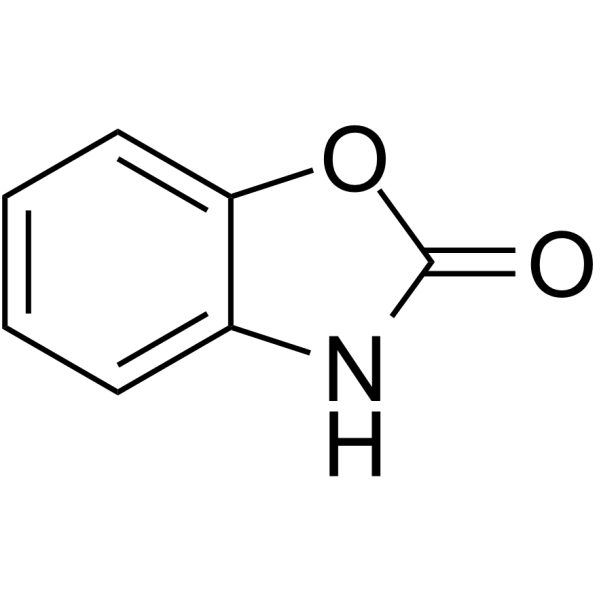
- HY-ER010
-
|
Imidazole hydrochloride
|
Biochemical Assay Reagents
|
Others
|
|
1H-Imidazole hydrochloride can be used as ligand, buffer and catalyst, etc., and also plays an important role in the process of drug synthesis and extraction of natural products. In addition, the compound is widely used in certain industrial fields, such as in the manufacturing process of plastics, coatings, textiles and electronic materials. Although the compound has no direct medical applications, it plays an important role in chemical research and laboratory studies.
|
-

- HY-W100404
-
|
|
Biochemical Assay Reagents
|
Others
|
|
Tetramethylammonium p-toluenesulfonate is a quaternary ammonium compound belonging to the class of alkylammonium salts. This compound is widely used as a phase transfer catalyst in organic synthesis to facilitate the transfer of reactants between immiscible phases. Furthermore, it can be used as a surfactant, emulsifier or stabilizer in various industrial applications. Its unique chemical properties make it an important ingredient in the production of pharmaceuticals, agrochemicals and materials science products.
|
-
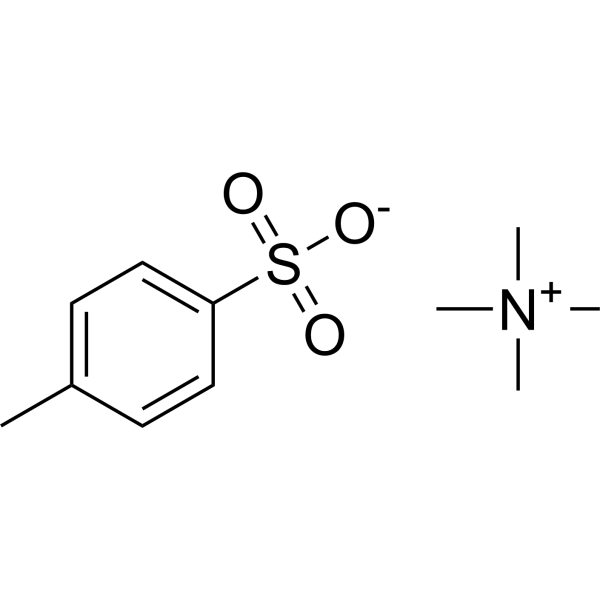
- HY-W105516
-
|
Phenylbenzyldimethylammonium chloride
|
Biochemical Assay Reagents
|
Others
|
|
N-Benzyl-N,N-dimethylbenzeneminium chloride is a quaternary ammonium compound belonging to the class of alkylammonium salts. This compound is widely used as a phase transfer catalyst in organic synthesis to facilitate the transfer of reactants between immiscible phases. In addition, it is used as an emulsifier, surfactant or disinfectant in various industrial applications. Its unique chemical properties make it an important ingredient in the production of pharmaceuticals, agrochemicals and polymer materials.
|
-

- HY-W114581
-
|
|
Biochemical Assay Reagents
|
Others
|
|
Ethyl2-hydroxy-4-methylpentanoate has a fruity odor and is commonly used as a flavoring agent in the food and beverage industry. In addition, it can be used as an intermediate in the synthesis of various organic compounds, including pharmaceuticals and agrochemicals. Its unique chemical properties make it an important ingredient in a variety of industrial processes, including the production of cosmetics and personal care products.
|
-
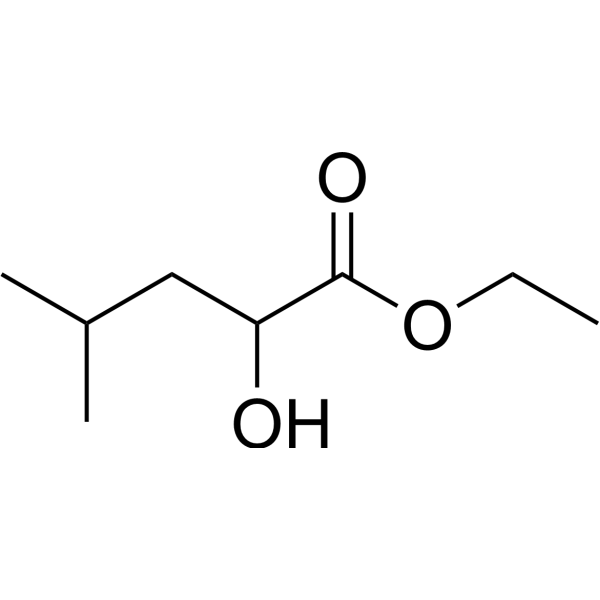
- HY-W250311
-
|
|
Biochemical Assay Reagents
|
Others
|
|
DL-Aspartic acid (hemimagnesium salt is DL-aspartic acid salt. DL-aspartic acid hemimagnesium salt is a commonly used food supplement and food additive, because it can promote the synthesis of protein in the human body, and has a positive effect on the nervous system and The production of cardiovascular system has a certain protective effect. In addition, due to some chemical reactions in the industry, DL-aspartic acid semi-magnesium salt can also be obtained.
|
-

- HY-B0152R
-
|
6-Aminopurine (Standard); Vitamin B4 (Standard)
|
DNA/RNA Synthesis
Endogenous Metabolite
|
Cancer
|
|
Adenine (Standard) is the analytical standard of Adenine. This product is intended for research and analytical applications. Adenine (6-Aminopurine), a purine, is one of the four nucleobases in the nucleic acid of DNA. Adenine acts as a chemical component of DNA and RNA. Adenine also plays an important role in biochemistry involved in cellular respiration, the form of both ATP and the cofactors (NAD and FAD), and protein synthesis .
|
-
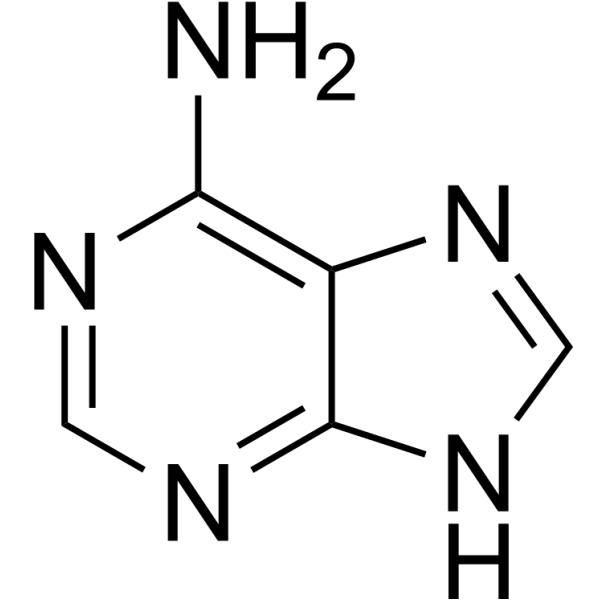
- HY-W013231
-
|
Benzyltriethylammonium iodide
|
Biochemical Assay Reagents
|
Others
|
|
N-Benzyl-N,N-diethylethanaminium iodide is a quaternary ammonium salt consisting of a positively charged N-benzyl-N,N-diethylethylamine cation and a negatively charged iodide anion. This compound is commonly used as a phase transfer catalyst in organic chemical reactions, facilitating the transfer of reactants between immiscible phases. It can also be used as a reagent for the synthesis of various organic compounds, and as a surfactant or emulsifier in industrial and personal care products.
|
-
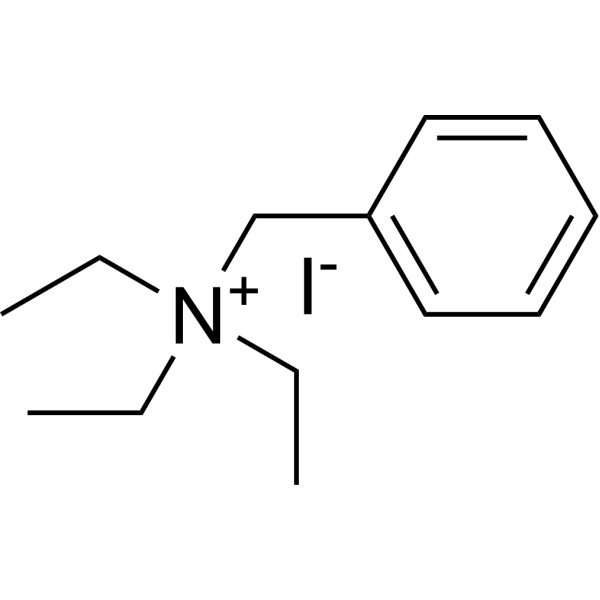
- HY-W101256
-
|
Triethylmethylammonium tetrafluoroborate
|
Biochemical Assay Reagents
|
Others
|
|
N,N-Diethyl-N-methylethanaminium tetrafluoroborate is a quaternary ammonium compound belonging to the class of alkylammonium salts. This compound is commonly used as a phase transfer catalyst in organic synthesis, facilitating the transfer of reactants between immiscible phases. Additionally, it is used as an electrolyte in electrochemical devices and as a surfactant in detergent formulations. Its unique chemical properties make it an important ingredient in a variety of industrial applications, including pharmaceuticals, agrochemicals, and materials science.
|
-

- HY-W014971
-
|
|
Biochemical Assay Reagents
|
Others
|
|
Tryptamine hydrochloride belongs to the class of indole alkaloids and is a derivative of the amino acid tryptophan. Tryptamine hydrochloride is psychoactive and acts as a neurotransmitter in the body, affecting mood, perception and cognition. In its hydrochloride form, Tryptamine hydrochloride hydrochloride, it is commonly used as a research chemical and as a starting material for the synthesis of other organic compounds. It can also occur naturally in certain plants and animals, including fungi and mammals. Due to the psychoactive properties of Tryptamine hydrochloride and its derivatives, its use and possession are controlled substances in many countries.
|
-
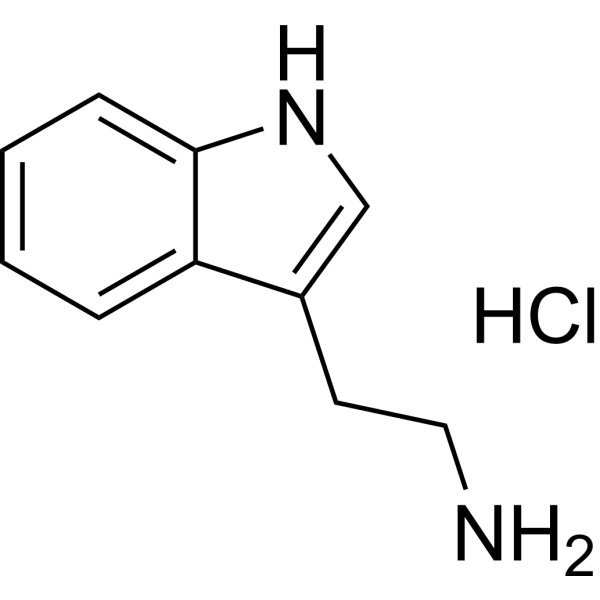
- HY-90006S
-
|
5-FU-d1
|
Nucleoside Antimetabolite/Analog
HIV
Apoptosis
Endogenous Metabolite
|
Cancer
|
|
5-Fluorouracil-d is the deuterium labeled 5-Fluorouracil. 5-Fluorouracil (5-FU) is an analogue of uracil and a potent antitumor agent. 5-Fluorouracil affects pyrimidine synthesis by inhibiting thymidylate synthetase thus depleting intracellular dTTP pools. 5-Fluorouracil induces apoptosis and can be used as a chemical sensitizer[1][2]. 5-Fluorouracil also inhibits HIV[3].
|
-
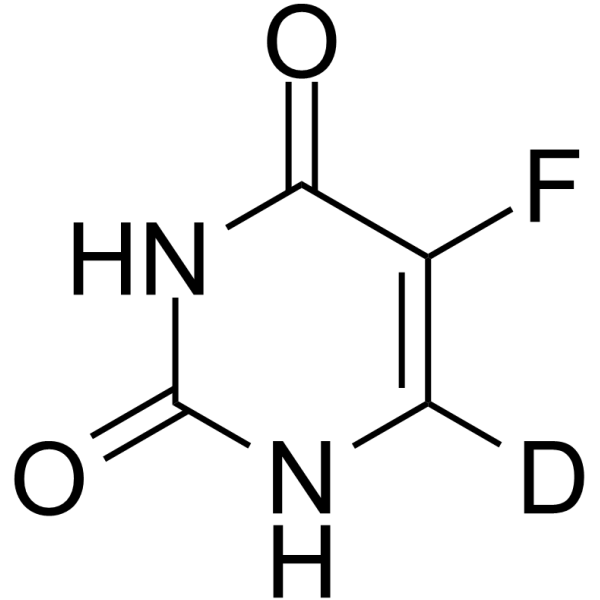
- HY-W099790
-
|
1-Butyl-1-methylpiperidinium Bromide
|
Biochemical Assay Reagents
|
Others
|
|
N-butyl-N-methyl-piperidinium bromide is a quaternary ammonium compound belonging to the class of piperidinium salts. N-butyl-N-methyl-piperidinium bromide is commonly used as a phase transfer catalyst in organic synthesis to transfer reactants between immiscible phases. It can also be used as a surfactant, corrosion inhibitor and antibacterial agent. Its unique chemical properties make it an important reagent in many different industries, including pharmaceuticals, agrochemicals, and materials science.
|
-
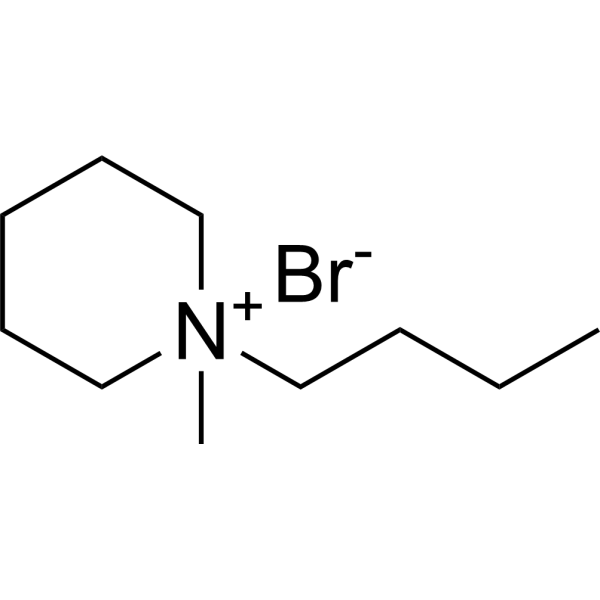
- HY-90006R
-
|
|
|
Cancer
|
|
5-Fluorouracil (Standard) is the analytical standard of 5-Fluorouracil. This product is intended for research and analytical applications. 5-Fluorouracil (5-FU) is an analogue of uracil and a potent antitumor agent. 5-Fluorouracil affects pyrimidine synthesis by inhibiting thymidylate synthetase thus depleting intracellular dTTP pools. 5-Fluorouracil induces apoptosis and can be used as a chemical sensitizer . 5-Fluorouracil also inhibits HIV .
|
-

- HY-90006S2
-
|
|
Nucleoside Antimetabolite/Analog
HIV
Apoptosis
Endogenous Metabolite
|
Cancer
|
|
5-Fluorouracil- 15N2 is the 15N-labeled 5-Fluorouracil. 5-Fluorouracil (5-FU) is an analogue of uracil and a potent antitumor agent. 5-Fluorouracil affects pyrimidine synthesis by inhibiting thymidylate synthetase thus depleting intracellular dTTP pools. 5-Fluorouracil induces apoptosis and can be used as a chemical sensitizer[1][2]. 5-Fluorouracil also inhibits HIV[3].
|
-
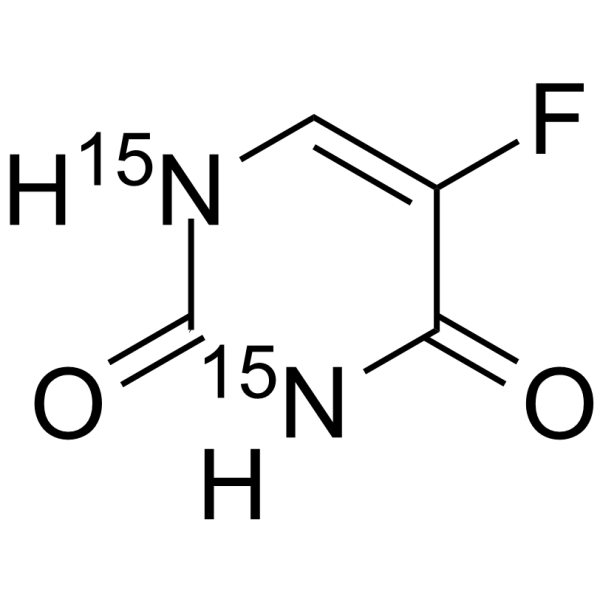
- HY-W099930
-
|
Trimethylpropylammonium bromide
|
Biochemical Assay Reagents
|
Others
|
|
N,N,N-Trimethylpropan-1-aminium bromide is a quaternary ammonium compound belonging to the class of alkylammonium salts. This compound is widely used as a phase transfer catalyst in organic synthesis, facilitating the transfer of reactants between immiscible phases. It can also be used as a surfactant, corrosion inhibitor or antimicrobial. Due to its unique chemical properties, N,N,N-Trimethylpropan-1-aminium bromide has applications in various industries such as pharmaceuticals, agrochemicals, and materials science.
|
-
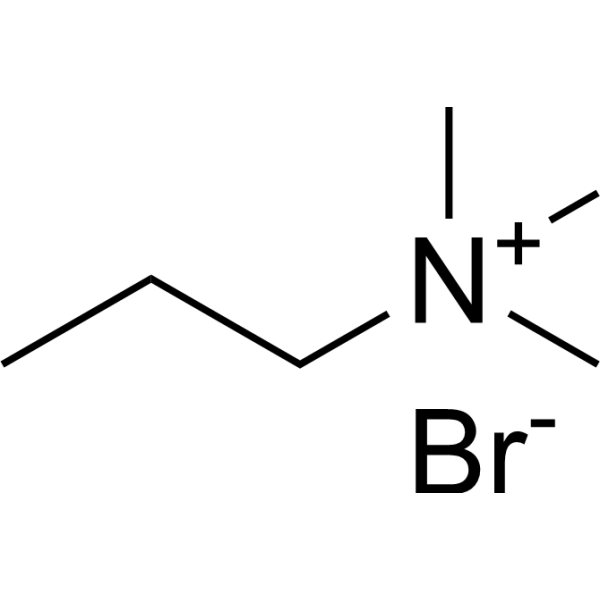
- HY-W111375
-
|
|
Biochemical Assay Reagents
|
Others
|
|
(E)-Pent-2-enal has a pungent fruity odor. This compound is commonly used in the flavor and fragrance industry because of its strong aroma, often described as fresh and green. Furthermore, (E)-Pent-2-enal can be used as an intermediate in the synthesis of various organic compounds, including pharmaceuticals and agrochemicals. Its unique chemical properties make it an important ingredient in many commercial products, including perfumes, air fresheners and cleaners.
|
-
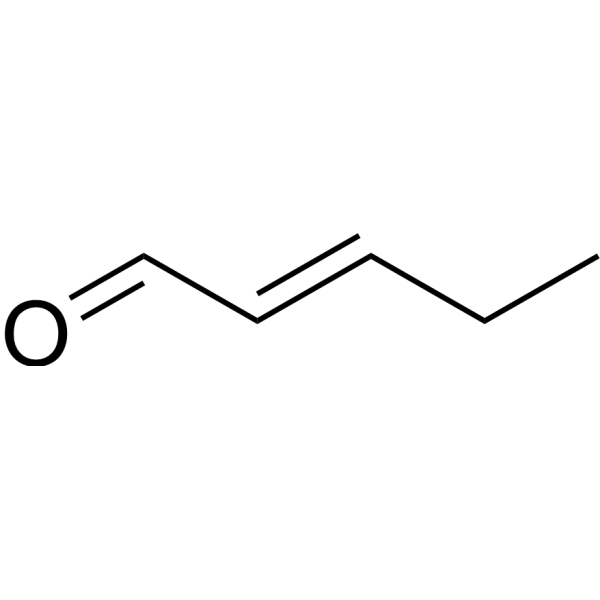
- HY-B0152S3
-
|
6-Aminopurine-13C5; Vitamin B4-13C5
|
Isotope-Labeled Compounds
DNA/RNA Synthesis
Endogenous Metabolite
|
Cancer
|
|
Adenine- 13C5 (6-Aminopurine- 13C5; Vitamin B4- 13C5) is 13C-labeled Adenine (HY-B0152). Adenine (6-Aminopurine), a purine, is one of the four nucleobases in the nucleic acid of DNA.
Adenine acts as a chemical component of DNA and RNA. Adenine also plays an important role in biochemistry involved in cellular respiration, the form of both ATP and the cofactors (NAD and FAD), and protein synthesis.
|
-

- HY-B0152S4
-
|
6-Aminopurine-15N5; Vitamin B4-15N5
|
Isotope-Labeled Compounds
DNA/RNA Synthesis
Endogenous Metabolite
|
Cancer
|
|
Adenine- 15N5 (6-Aminopurine- 15N5; Vitamin B4- 15N5) is 15N labeled Adenine (HY-B0152). Adenine (6-Aminopurine), a purine, is one of the four nucleobases in the nucleic acid of DNA.
Adenine acts as a chemical component of DNA and RNA. Adenine also plays an important role in biochemistry involved in cellular respiration, the form of both ATP and the cofactors (NAD and FAD), and protein synthesis.
|
-

- HY-W039760
-
|
|
Biochemical Assay Reagents
|
Others
|
|
2-Hydroxy-N,N,N-trimethylethan-1-aminium iodide, also known as choline iodide, is a quaternary ammonium salt commonly used in organic synthesis and biochemical research. It is a water-soluble compound derived from choline, an essential nutrient found in many foods. Choline iodide has been used as a source of choline groups in various chemical reactions and in microbiology as a selective agent for isolating bacteria. In addition, its potential role in cognitive impairment and liver disease has also been studied.
|
-
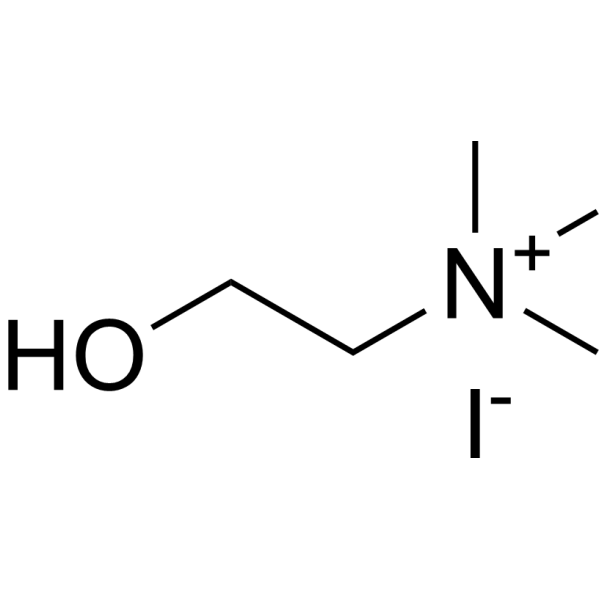
- HY-W099929
-
|
|
Biochemical Assay Reagents
|
Others
|
|
N-Ethyl-N,N-dipropylpropan-1-aminium iodide is a quaternary ammonium compound belonging to the class of alkylammonium salts. N-Ethyl-N,N-dipropylpropan-1-aminium (iodide) is commonly used as a phase transfer catalyst in organic synthesis to transfer reactants between immiscible phases. It can also be used as a surfactant, antimicrobial or corrosion inhibitor. Its unique chemical properties make it an essential reagent in many different industrial applications, including pharmaceuticals, agrochemicals, and materials science.
|
-

- HY-90006S1
-
|
5-FU-13C,15N2
|
Apoptosis
Nucleoside Antimetabolite/Analog
HIV
Endogenous Metabolite
|
Cancer
|
|
5-Fluorouracil- 13C, 15N2 is the 13C and 15N labeled 5-Fluorouracil[1]. 5-Fluorouracil (5-FU) is an analogue of uracil and a potent antitumor agent. 5-Fluorouracil affects pyrimidine synthesis by inhibiting thymidylate synthetase thus depleting intracellular dTTP pools. 5-Fluorouracil induces apoptosis and can be used as a chemical sensitizer[2][3]. 5-Fluorouracil also inhibits HIV[4].
|
-

- HY-N0709S1
-
|
|
Bacterial
Fungal
Isotope-Labeled Compounds
|
Cancer
|
|
Coumarin-d6 is deuterated labeled trans-2-Undecenal (HY-W127505). Trans-2-UndecenalIt is an organic compound belonging to aldehydes. It has a strong, pungent smell and is commonly found in a variety of foods, including fruits and vegetables. Trans-2-UndecenalIt has a variety of applications in the flavor and fragrance industry, especially as a fragrance agent in products such as perfume, cologne and air fresheners. In addition, it can also be used as an intermediate in the synthesis of various chemicals and drugs.
|
-
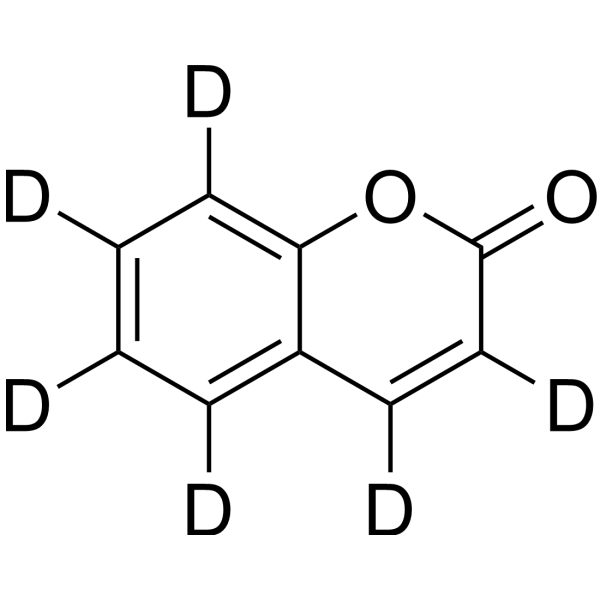
- HY-90006S3
-
|
5-FU-13C4,15N2
|
Apoptosis
Nucleoside Antimetabolite/Analog
HIV
Endogenous Metabolite
|
Cancer
|
|
5-Fluorouracil- 13C4, 15N2 is the 13C and 15N labeled 5-Fluorouracil[1]. 5-Fluorouracil (5-FU) is an analogue of uracil and a potent antitumor agent. 5-Fluorouracil affects pyrimidine synthesis by inhibiting thymidylate synthetase thus depleting intracellular dTTP pools. 5-Fluorouracil induces apoptosis and can be used as a chemical sensitizer[2][3]. 5-Fluorouracil also inhibits HIV[4].
|
-

- HY-Y0302
-
|
|
Biochemical Assay Reagents
|
Others
|
|
Diammonium phosphate is a neutral and efficient catalyst in 1,8‐Dioxo‐octahydroxanthene derivatives synthesis. Diammonium phosphate can be used as an excipient, such as diuretic, buffer, effervescent. Pharmaceutical excipients, or pharmaceutical auxiliaries, refer to other chemical substances used in the pharmaceutical process other than pharmaceutical ingredients. Pharmaceutical excipients generally refer to inactive ingredients in pharmaceutical preparations, which can improve the stability, solubility and processability of pharmaceutical preparations. Pharmaceutical excipients also affect the absorption, distribution, metabolism, and elimination (ADME) processes of co-administered drugs .
|
-
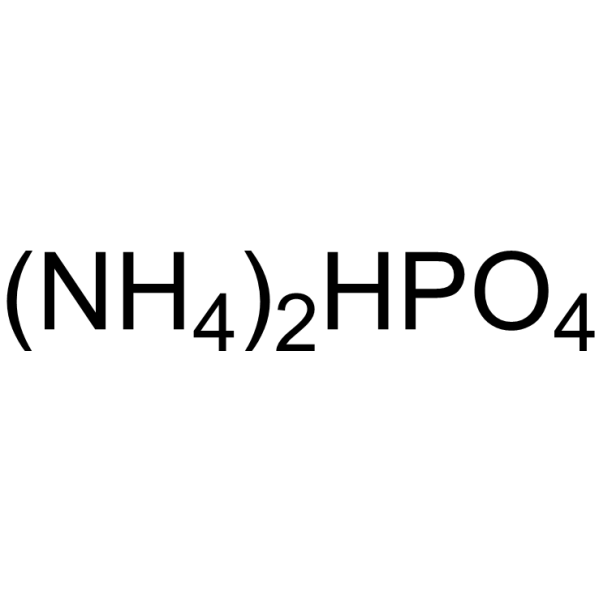
- HY-130711
-
|
VH032-C3-NH2
|
E3 Ligase Ligand-Linker Conjugates
|
Cancer
|
|
(S,R,S)-AHPC-C3-NH2 (VH032-C3-NH2) is a synthesized E3 ligase ligand-linker conjugate that incorporates the VH032 based VHL ligand and a linker used in PROTAC technology. (S,R,S)-AHPC-C3-NH2 can be used in the synthesis of a series of PROTACs, such as UNC6852 (HY-130708). UNC6852 is an EED-targeted bivalent chemical degrader .
|
-
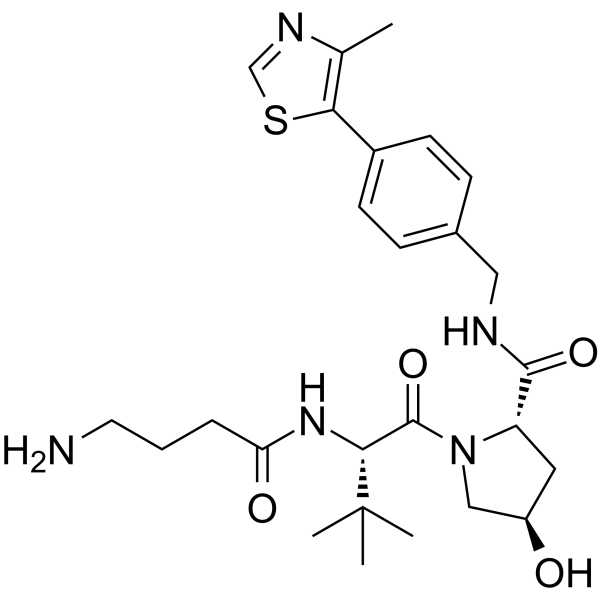
- HY-130711A
-
|
VH032-C3-NH2 TFA
|
E3 Ligase Ligand-Linker Conjugates
|
Cancer
|
|
(S,R,S)-AHPC-C3-NH2 TFA (VH032-C3-NH2 TFA) is a synthesized E3 ligase ligand-linker conjugate that incorporates the VH032 based VHL ligand and a linker used in PROTAC technology. (S,R,S)-AHPC-C3-NH2 can be used in the synthesis of a series of PROTACs, such as UNC6852 (HY-130708). UNC6852 is an EED-targeted bivalent chemical degrader .
|
-
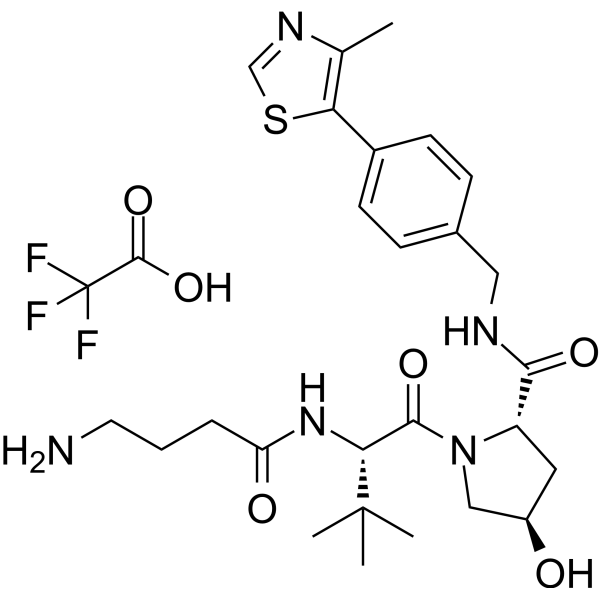
- HY-W020985
-
|
Pd(DIPHOS)2
|
Biochemical Assay Reagents
|
Others
|
|
Bis[1,2-bis(diphenylphosphino)ethane]palladium(0), often abbreviated as Pd(PPh3)2 or Pd(dppf), is an organometallic compound. This compound is widely used as a catalyst for organic chemical reactions, especially cross-coupling reactions such as Suzuki-Miyaura reaction and Heck reaction, and its high catalytic activity, selectivity and stability make it a versatile tool for the synthesis of complex organic compounds , in addition, the potential application of Pd(PPh3)2 in the production of electronic materials and in medical and biochemical research has also been investigated.
|
-
![Bis[1,2-bis(diphenylphosphino)ethane]palladium(0)](//file.medchemexpress.com/product_pic/hy-w020985.gif)
- HY-149026
-
|
|
Epigenetic Reader Domain
|
Others
|
|
GNE-064 (compound 5) is a selective, orally active and highly soluble inhibitor of SMARCA4, SMARCA2 and PBRM1 bromodomains 5. GNE-064 inhibits SMARCA4 with an IC50 of 0.035 μM and inhibits SMARCA2 with an EC50 of 0.10 μM. GNE-064 possess Kds with 0.01, 0.016, 0.018 and 0.049 μM for SMARCA4, SMARCA2, PBRM1 bromodomains 5 and PBRM1 bromodomains 2, repectively. GNE-064 can be used as a chemical probe for the research of agent synthesis .
|
-
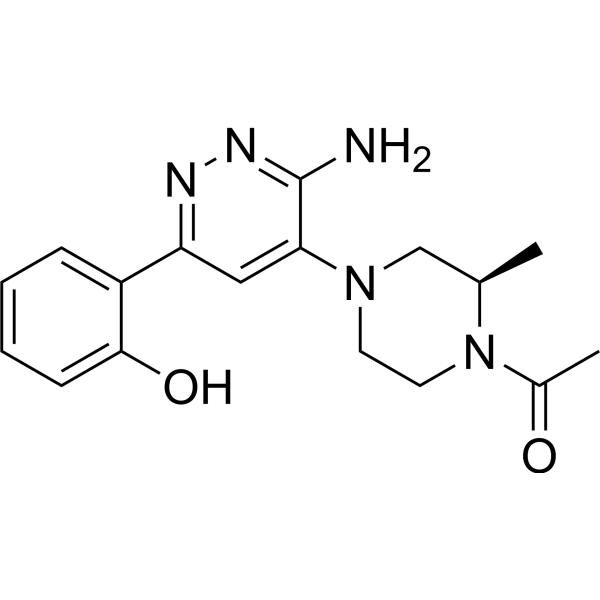
- HY-W061674
-
|
(E)-Pent-2-enoic acid
|
Biochemical Assay Reagents
|
Others
|
|
(2E)-Pent-2-enoic acid is an unsaturated carboxylic acid, it is also known as 2-pentenoic acid or crotonic acid, the "2E" designation indicates that the molecule has a trans double bond configuration, where the double bond The two carbon atoms on both sides are located on opposite sides, (2E)-Pent-2-enoic acid has a pungent odor, is miscible with water and most organic solvents, it is commonly used in organic synthesis as a variety of chemical reactions, including esterification, oxidation, and reduction, and in addition, its potential use as a flavoring agent in the food industry was investigated.
|
-
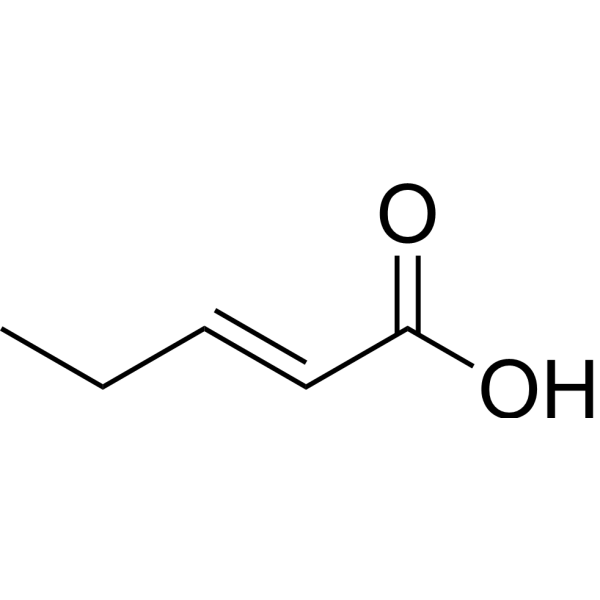
- HY-N1369S1
-
|
|
Calcium Channel
Isotope-Labeled Compounds
|
Neurological Disease
|
|
Menthol-d2 is deuterated labeled trans-2,cis-6-Nonadienal (HY-W127515). Trans-2, cis-6-NonadienalIt is an organic compound belonging to aldehydes. It has a strong, pungent smell and is commonly found in a variety of foods, including fruits and vegetables. Trans-2, cis-6-NonadienalIt has a variety of applications in the flavor and fragrance industry, especially as a fragrance agent in products such as perfume, cologne and air fresheners. In addition, it can also be used as an intermediate in the synthesis of various chemicals and drugs.
|
-
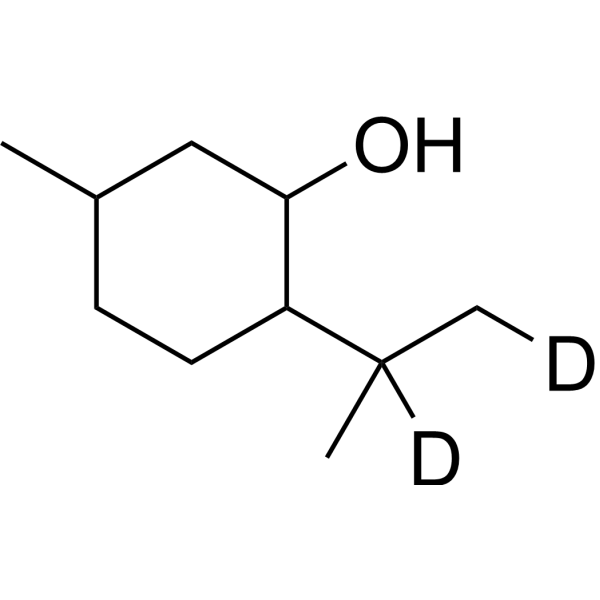
- HY-W015936
-
|
trans-Hex-2-en-1-ol
|
Biochemical Assay Reagents
|
Others
|
|
(E)-Hex-2-en-1-ol belongs to the class of unsaturated alcohols consisting of a six-carbon chain with a double bond between carbon atoms 2 and 3 and a hydroxyl group attached to carbon atom 1. The compound has a grassy or herbaceous smell and is commonly used as a flavoring in foods such as baked goods, candy and beverages. It can also be used as a fragrance ingredient in personal care products and as a starting material for the synthesis of other organic compounds. Furthermore, (E)-hex-2-en-1-ol can be used as a solvent or reagent in various chemical reactions.
|
-
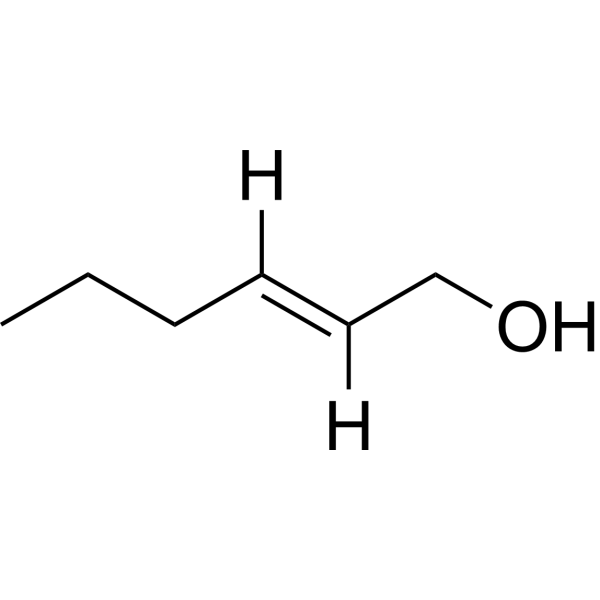
- HY-B0152S2
-
|
6-Aminopurine-13C5,15N5; Vitamin B4-13C5,15N5
|
Isotope-Labeled Compounds
DNA/RNA Synthesis
Endogenous Metabolite
|
Cancer
|
|
Adenine- 13C5,15C5 (6-Aminopurine- 13C5,15C5; Vitamin B4- 13C5,15C5) is 13C-labeled Adenine (HY-B0152). Adenine (6-Aminopurine), a purine, is one of the four nucleobases in the nucleic acid of DNA. Adenine acts as a chemical component of DNA and RNA. Adenine also plays an important role in biochemistry involved in cellular respiration, the form of both ATP and the cofactors (NAD and FAD), and protein synthesis.
|
-

- HY-N7833
-
|
Heneicosapentaenoic acid
|
Biochemical Assay Reagents
|
Others
|
|
Heneicosapentaenoic Acid (HPA) is a 21:5 omega-3 fatty acid found in trace amounts in the green alga B. pennata and in fish oils. Its chemical composition is similar to eicosapentaenoic acid (EPA), except that a carbon is extended at the carboxy terminus, placing the first double bond at the δ6 position. HPA can be used to study the importance of double bond position in omega-3 fatty acids. It incorporates phospholipids and triacylglycerols in vivo with the same efficiency as EPA and docosahexaenoic acid, and exhibits a strong inhibitory effect on the synthesis of arachidonic acid from linoleic acid. HPA is a poor substrate for prostaglandin H synthase (PGHS) (cyclooxygenase) and 5-lipoxygenase, but retains the ability to rapidly inactivate PGHS.
|
-
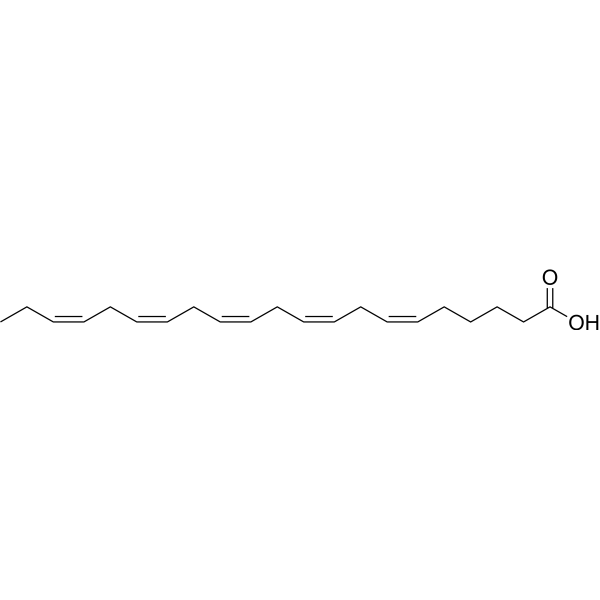
- HY-130711C
-
|
VH032-C3-NH2 dihydrochloride
|
E3 Ligase Ligand-Linker Conjugates
|
Cancer
|
|
(S,R,S)-AHPC-C3-NH2 (dihydrochloride) is the dihydrochloride form of (S,R,S)-AHPC-C3-NH2 (HY-130711). (S,R,S)-AHPC-C3-NH2 (VH032-C3-NH2) is a synthesized E3 ligase ligand-linker conjugate that incorporates the VH032 based VHL ligand and a linker used in PROTAC technology. (S,R,S)-AHPC-C3-NH2 can be used in the synthesis of a series of PROTACs, such as UNC6852 (HY-130708). UNC6852 is an EED-targeted bivalent chemical degrader .
|
-
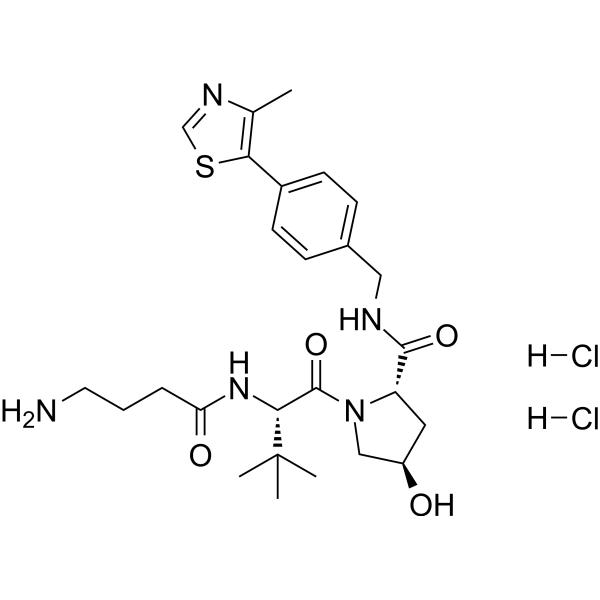
-
-
HY-L0103V
-
|
|
680,000 compounds
|
|
UORSY Screening Compounds Library contains about 680,000 compounds. The library has extensively developed a polymerization synthesis method that provides a highly diverse chemical structure. More than 85% of the compounds in the library have drug-like physicochemical properties, and more than 35% of the compounds have lead-like properties.
|
-
-
HY-L0087V
-
|
|
494,471 compounds
|
|
Life Chemicals Collection of small organic molecules for high-throughput screening currently contains 494 off-the-shelf products. The Collection is being permanently replenished with de novo designed products having optimal physicochemical parameters for drug discovery.
|
-
-
HY-L004
-
|
|
2,037 compounds
|
|
DNA is prone to numerous forms of damage that can injure cells and impair fitness. Cells have developed an array of mechanisms to repair these injuries. Proliferating cells are especially vulnerable to DNA damage due to the added demands of cellular growth and division. Cell cycle checkpoints represent integral components of DNA repair that coordinate cooperation between the machinery of the cell cycle and several biochemical pathways that respond to damage and restore DNA structure. By delaying progression through the cell cycle, checkpoints provide more time for repair before the critical phases of DNA replication, when the genome is replicated, and of mitosis, when the genome is segregated. Loss or attenuation of checkpoint function may increase spontaneous and induced gene mutations and chromosomal aberrations by reducing the efficiency of DNA repair.
MCE owns a unique collection of 2,037 cell cycle/DNA damage-related compounds which can be used in the research of the same.
|
-
-
HY-L912V
-
|
|
10,000,000 compounds
|
|
With MCE's 40,662 BBs, covering around 273 reaction types, more than 40 million molecules were generated. Compounds which comply with Ro5 criteria were selected. Inappropriate chemical structures, such as PAINS motifs and synthetically difficult accessible, were removed. Based on Morgan Fingerprint, molecular clustering analysis was carried out, and molecules close to each clustering center were extracted to form this drug-like and synthesizable diversity library. These selected molecules have 805,822 unique Bemis-Murcko Scaffolds (BMS) with diversified chemical space. This library is highly recommended for AI-based lead discovery, ultra-large virtual screening and novel lead discovery.
|
-
-
HY-L910V
-
|
|
50,000 compounds
|
|
MegaUni 50K Virtual Diversity Library consists of 50,000 novel, synthetically accessible, lead-like compounds. With MCE's 40,662 Building Blocks, covering around 273 reaction types, more than 40 million molecules were generated. Based on Morgan Fingerprint and Tanimoto Coefficient, molecular clustering analysis was carried out, and molecules closest to each clustering center were extracted to form a drug-like and synthesizable diversity library. The selected 50,000 drug-like molecules have 46,744 unique Bemis-Murcko Scaffolds (BMS), each containing only 1-3 compounds. This diverse library is highly recommended for virtual screening and novel lead discovery.
|
-
-
HY-L048
-
|
|
343 compounds
|
|
The high rates of morbidity and mortality caused by fungal infections are associated with the current limited antifungal arsenal and the high toxicity of the compounds. Additionally, identifying novel drug targets is challenging because there are many similarities between fungal and human cells. The most common antifungal targets include fungal RNA synthesis and cell wall and membrane components, though new antifungal targets are being investigated. Nonetheless, fungi have developed resistance mechanisms, such as overexpression of efflux pump proteins, overexpression and changes in drug targets and biofilm formation, emphasizing the importance of discovering new antifungal drugs and therapies. Due to the limited antifungal arsenal, researchers have sought to improve treatment via different approaches, such as the combination of antifungal drugs, development of new formulations for antifungal agents and modifications to the chemical structures of traditional antifungals, etc.
MCE offers a unique collection of 343 compounds with validated antifungal activities. MCE antifungal compound library is an effective tool for drug repurposing screening, combination screening and biological investigation.
|
-
-
HY-L022M
-
|
|
2,945 compounds
|
|
New drug development is a time-consuming and high-cost process. Drug repurposing (also called drug repositioning, reprofiling or re‑tasking) offers various advantages over developing an entirely new drug for a given indication. First, the risk of failure is lower. Second, the time frame for drug development can be reduced. Third, less investment is needed. Approved drugs have identified bioactivities, good pharmacokinetic characteristics and safety which are suitable for drug repurposing.
MCE owns a unique collection of 2,945 approved compounds which have been completed extensive preclinical and clinical studies and have well-characterized bioactivities, safety and bioavailability properties. The package of this library is 96-well microplate with peelable foil seal, which makes the screening process easier and faster.
|
| Cat. No. |
Product Name |
Type |
-
- HY-D1853
-
|
|
Dyes
|
|
Sulfo-Cy5 carboxylic acid is a Cy5 derivative that can be used for chemical synthesis. Cy5 is a red fluorescent label dye for imaging (Ex/Em=642/670 nm) .
|
-
- HY-D1853A
-
|
|
Fluorescent Dyes/Probes
|
|
Sulfo-Cy5 carboxylic acid TEA is a Cy5 derivative that can be used for chemical synthesis. Cy5 is a red fluorescent label dye for imaging (Ex/Em=642/670 nm) .
|
| Cat. No. |
Product Name |
Type |
-
- HY-W001578
-
|
|
Biochemical Assay Reagents
|
|
1-Adamantaneacetic acid is an aliphatic carboxylic acid that can be used as an acylating agent, commonly found in chemical synthesis .
|
-
- HY-W001939
-
|
4-Acetylbenzoic acid
|
Biochemical Assay Reagents
|
|
4-Acetylbenzoic acid is a derivative of benzoic acid and is commonly used in chemical synthesis .
|
-
- HY-W001943
-
|
|
Biochemical Assay Reagents
|
|
3-Benzoylpropionic acid can be used as an intermediate in organic synthesis for the preparation of other organic compounds .
|
-
- HY-21626
-
|
p-Tolylboronic acid
|
Biochemical Assay Reagents
|
|
4-Tolylboronic acid is an organoboron compound with important chemical applications. It can be used as an important intermediate in organic synthesis for the synthesis of organic compounds such as drugs, pesticides, and cosmetics, as well as for the research of coordination chemistry and material science. Due to its high chemical reactivity, 4-Tolylboronic acid has become a widely used reagent in organic synthesis.
|
-
- HY-77957
-
|
|
Biochemical Assay Reagents
|
|
1-O-Methyl-2-deoxy-D-ribose is a ribose derivative that can be more conveniently obtained through a one-step reaction by introducing a methoxy protective group at the anomeric carbon position under acidic conditions. This facilitates the acquisition of 2-deoxy-D-ribose. 1-O-Methyl-2-deoxy-D-ribose can be utilized in research on the synthesis of chemical materials .
|
-
- HY-157918
-
|
20-(16-Mercaptohexadecanyloxy)-3,6,9,12,15,18-hexaoxaeicosanoic acid
|
Biochemical Assay Reagents
|
|
Carboxy-EG6-hexadecanethiol is a biochemical assay reagent and can be used for chemical synthesis .
|
-
- HY-W094581
-
|
|
Biochemical Assay Reagents
|
|
Gold (III) chloride trihydrate is a reducing agent. Gold (III) chromium trihydrate can be used for chemical synthesis of gold nanoparticles (NP) and spirochromene derivatives .
|
-
- HY-W010394
-
|
|
Biochemical Assay Reagents
|
|
Methyl 3-oxopentanoate, which is also known as diethyl acetylmalonate or MEAM, Methyl 3-oxopentanoate is commonly used as a building block for the synthesis of various organic compounds, including pharmaceuticals, agrochemicals, and flavorings, and it can also Used as a reagent in organic chemical reactions, especially the formation of carbon-carbon bonds through malonate synthesis, the researchers also investigated the potential use of Methyl 3-oxopentanoate in the development of chiral auxiliaries that can aid in the selection of Controlling the stereochemistry of chemical reactions.
|
-
- HY-Y1881A
-
|
|
Buffer Reagents
|
|
Copper sulfate pentahydrate, commonly used biochemical reagents. Copper sulfate pentahydrate, 99.9% indicates that it is almost entirely pure, making it suitable for uses in laboratory experiments, chemical synthesis, and some pharmaceutical applications.
|
-
- HY-W099600
-
|
Bisdodecanoic anhydride
|
Biochemical Assay Reagents
|
|
Lauric anhydride is a white waxy solid used as an intermediate in the production of various chemicals. It is primarily used in the synthesis of surfactants, emulsifiers, and lubricants, and as a raw material for other important industrial chemicals such as plasticizers and flavoring agents. It can be obtained from natural sources such as palm kernel oil and coconut oil, and its unique chemical structure allows it to be used to create compounds with specific surface and interfacial properties.
|
-
- HY-Y1045
-
|
TBAHS-MB
|
Biochemical Assay Reagents
|
|
Tetrabutylammonium hydrosulfate is a quaternary ammonium salt that is commonly used as a phase transfer catalyst, acid catalyst and reagent in various chemical reactions, especially in organic synthesis. Tetrabutylammonium hydrosulfate has unique chemical properties that allow it to facilitate the transfer of ions or molecules from one phase to another, making it an important ingredient in a variety of industrial processes.
|
-
- HY-Y0080
-
|
|
Biochemical Assay Reagents
|
|
Methyl trioctyl ammonium chloride is a quaternary ammonium salt commonly used as a surfactant, stabilizer and phase transfer catalyst in various chemical reactions, especially in organic synthesis. Methyl trioctyl ammonium chloride has unique chemical properties that facilitate the transfer of ions or molecules from one phase to another, making it an important ingredient in a variety of industrial processes.
|
-
- HY-W008635
-
|
|
Biochemical Assay Reagents
|
|
Tetrabutylammonium tetrahydroborate is an organic compound commonly used as a reducing agent and catalyst. It can act as a reducing agent in certain chemical reactions and can promote the reduction of organic compounds such as esters, aldehydes and ketones. In addition, this compound is also widely used in organic synthesis and chemical analysis, and also has important uses in some production processes.
|
-
- HY-W036734
-
|
|
Biochemical Assay Reagents
|
|
Tetrabutylammonium (hydrogen difluoride) is a quaternary ammonium salt containing fluoride ions. It is a highly active and effective reagent, often used in organic synthesis reactions, especially for the modification of organic molecules with fluorine atoms. Tetrabutylammonium (hydrogen difluoride) is also used as a catalyst for various chemical reactions such as esterification and transesterification. Additionally, it is used in the production of specialty chemicals such as surfactants and detergents.
|
-
- HY-157924
-
|
Bis[(benzo-15-crowN-5)-4-methyl]pimelate
|
Chelators
|
|
Bis(benzo-15-crown-5) (Bis[(benzo-15-crowN-5)-4-methyl]pimelate) is a biochemical assay reagent, and can be used for chemical synthesis .
|
-
- HY-34717
-
|
Tetra-n-butylammonium tetrafluoroborate
|
Biochemical Assay Reagents
|
|
Tetrabutylammonium tetrafluoroborate is an inorganic salt commonly used in organic synthesis reactions and electrochemical applications. It is usually used as a catalyst or reagent, and is widely used in the field of organic synthesis, such as fluorination reaction, olefin addition and cyclization reaction, etc. In addition, it can also be used in electrochemical deposition and electroplating, and plays an important role in some electronic devices. Although it has no direct application in the medical field, it plays an important role in chemical research and industrial production.
|
-
- HY-75920
-
|
|
Biochemical Assay Reagents
|
|
Inhoffen Lythgoe diol is an organic molecule commonly used in chiral selective reactions in organic synthesis. It can be used as a catalyst and a ligand, and has a wide range of applications in the preparation of nitrogen- and sulfur-containing natural products, pharmaceuticals, and material science. Inhoffen Lythgoe diol plays a very important role in the field of asymmetric synthesis. Although it has no direct medical application, it plays an important role in the production and research of many important chemicals.
|
-
- HY-W112005
-
|
|
Biochemical Assay Reagents
|
|
Benzyltrimethylammonium tetrachloroiodate is a quaternary ammonium salt belonging to the class of alkylammonium salts. The compound is used as a reagent in organic synthesis, especially in the oxidation of alkenes and alcohols. Its unique chemical properties make it an important ingredient in a variety of industrial processes, including pharmaceuticals and agrochemicals.
|
-
- HY-W008145
-
|
Sodium tetrachloropalladate(II) trihydrate
|
Biochemical Assay Reagents
|
|
Sodium tetrachloropalladate(II) is an organic compound commonly used as a catalyst and as a raw material for dye production. It can be used to catalyze or promote reactions in certain chemical reactions, and is widely used in the fields of organic synthesis and dye preparation. In addition, the compound is also used for metallization, silver plating and electroplating of circuit boards.
|
-
- HY-W127671
-
|
|
Biochemical Assay Reagents
|
|
Tetramethylammonium perchlorate is used as an intermediate in organic and chemical synthesis. It is used as mobile phase in HPLC analysis and quantification of olanzapine, clozapine and N-desmethylclozapine. It acts as a supporting electrolyte in the electrochemical reduction of 1-bromodecane, 1-iodododecane, 2-iodooctane, and 2-bromooctane on a mercury cathode.
|
-
- HY-Y0415
-
|
N,N,N-triethylethanaminium (fluoride)
|
Biochemical Assay Reagents
|
|
Tetraethylammonium fluoride is an organic compound containing both ammonium and fluorine functional groups. It is commonly used as a reagent in various chemical synthesis applications, especially as a source of fluoride ions for nucleophilic reactions. Tetraethylammonium fluoride has several properties that make it suitable for these applications, including its high solubility in polar solvents and its ability to selectively activate certain chemical bonds. In addition, it is used as a catalyst for organic reactions and as a surfactant in the production of semiconductors and microelectronics.
|
-
- HY-Y0971
-
|
TBAF
|
Biochemical Assay Reagents
|
|
Tetrabutylammonium fluoride is an organic compound containing both ammonium and fluorine functional groups. It is commonly used as a reagent in various chemical synthesis applications, especially as a source of fluoride ions for nucleophilic reactions. Tetrabutylammonium fluoride has several properties that make it suitable for these applications, including its high solubility in polar solvents and its ability to selectively activate certain chemical bonds. In addition, it can be used as a catalyst for organic reactions and as an electrolyte for batteries.
|
-
- HY-D0898
-
|
|
Biochemical Assay Reagents
|
|
2,4-Dichlorobenzenediazonium tetrafluoroborate is an organic compound commonly used in organic synthesis and dye preparation reactions. It can be used as an azotating agent to form azo dyes with other organic substances, and can be used in coatings, pigments and paints and other industries. In addition, the compound is widely used in certain chemical analysis and detection methods, such as in scientific instruments such as electron microscopes and mass spectrometers. Although the compound has no direct medical applications, it plays an important role in chemical research and laboratory studies.
|
-
- HY-W040184
-
|
TMAHS
|
Biochemical Assay Reagents
|
|
Tetramethylammonium hydrogensulfate, sometimes abbreviated as TMAHS, is a quaternary ammonium salt commonly used as a catalyst and phase transfer agent in chemical reactions, especially in organic synthesis. In addition, it is used as an electrolyte additive in electrochemical and rechargeable batteries. TMAHSs have also been investigated for their potential use in various applications such as wastewater treatment, gas separation, and fuel cells.
|
-
- HY-W099642
-
|
Trimethyl-n-octylammonium bromide
|
Biochemical Assay Reagents
|
|
Trimethyloctylammonium bromide (TOAB) is used as a surfactant and phase transfer catalyst in various chemical reactions. TOAB can be used in the synthesis of nanomaterials due to its ability to selectively transfer ions across interfaces and as a surfactant in the production of emulsions and foams. It is valued for its amphiphilic properties, which allow it to interact with water and oils, stabilizing and dispersing mixtures.
|
-
- HY-W109978
-
|
|
Biochemical Assay Reagents
|
|
Tetrabutylammonium perrhenate is a quaternary ammonium salt belonging to the class of alkylammonium salts. This compound is used as a catalyst in organic synthesis, especially in the production of alkenes and alcohols. Furthermore, due to its ability to bind radioisotopes, it is useful as a radiopharmaceutical in nuclear medicine. Its unique chemical properties make it an essential ingredient in a variety of industrial processes, including petrochemical refining and pharmaceuticals.
|
-
- HY-W142618
-
|
|
Biochemical Assay Reagents
|
|
D-Glucal is an organic compound belonging to the family of aldoses, which are monosaccharides containing an aldehyde functional group. It has a six-carbon structure and is derived from glucose by oxidation of the primary alcohol group at carbon 1 to an aldehyde group. D-Glucal is a white crystalline solid that is soluble in water and has a sweet taste. It is an important intermediate in the chemical synthesis of a wide variety of compounds, including pharmaceuticals, agrochemicals, and natural products. D-Glucal can be converted into other carbohydrate derivatives such as glycosides, glycoconjugates and amino sugars. It also plays a role in the study of carbohydrate chemistry, where it is used as a chiral building block for the synthesis of complex structures.
|
-
- HY-B2151
-
|
Cerberigenin; Echujetin
|
Biochemical Assay Reagents
|
|
Digitoxigenin is a steroid derivative commonly found in various plants, especially the foxglove plant (Digitalis purpurea). Digitoxigenin has unique chemical properties that make it an important precursor for the synthesis of cardiac glycosides, a group of drugs used to improve heart failure and certain types of arrhythmias. It works by inhibiting the sodium potassium ATPase pump, thereby increasing the force and efficiency of cardiac contractions.
|
-
- HY-W127344
-
|
|
Biochemical Assay Reagents
|
|
Oleoyl chloride A pungent-smelling liquid commonly used as a reagent in organic synthesis, especially for the production of a variety of organic compounds, including pharmaceuticals and agrochemicals. In addition, it can also be used as a cross-linking agent or surfactant in polymer chemistry. Its unique chemical properties make it an important ingredient in a variety of industrial processes, including petrochemical refining and materials science.
|
-
- HY-W105734
-
|
|
Biochemical Assay Reagents
|
|
15-Hydroxypentadecanoic acid is a long-chain fatty acid found in various plant and animal sources and also produced by bacteria and fungi. It has potential health benefits and is used as an intermediate in the synthesis of other organic compounds, including pharmaceuticals, agrochemicals and surfactants. Its unique chemical properties make it an essential ingredient in several industrial processes, especially in the fields of food science and nutrition.
|
-
- HY-W014408
-
|
TEA bromide
|
Biochemical Assay Reagents
|
|
Tetraethylammonium bromide is a quaternary ammonium salt consisting of a positively charged tetraethylammonium cation and a negatively charged bromide anion. This compound is commonly used as a phase transfer catalyst in organic chemical reactions, facilitating the transfer of reactants between immiscible phases. It can also be used as a reagent for the synthesis of various organic compounds, an electrolyte in electrochemical experiments, and a source of tetraethylammonium ions in biochemical and pharmacological research.
|
-
- HY-ER010
-
|
Imidazole hydrochloride
|
Co-solvents
|
|
1H-Imidazole hydrochloride can be used as ligand, buffer and catalyst, etc., and also plays an important role in the process of drug synthesis and extraction of natural products. In addition, the compound is widely used in certain industrial fields, such as in the manufacturing process of plastics, coatings, textiles and electronic materials. Although the compound has no direct medical applications, it plays an important role in chemical research and laboratory studies.
|
-
- HY-W100404
-
|
|
Biochemical Assay Reagents
|
|
Tetramethylammonium p-toluenesulfonate is a quaternary ammonium compound belonging to the class of alkylammonium salts. This compound is widely used as a phase transfer catalyst in organic synthesis to facilitate the transfer of reactants between immiscible phases. Furthermore, it can be used as a surfactant, emulsifier or stabilizer in various industrial applications. Its unique chemical properties make it an important ingredient in the production of pharmaceuticals, agrochemicals and materials science products.
|
-
- HY-W105516
-
|
Phenylbenzyldimethylammonium chloride
|
Biochemical Assay Reagents
|
|
N-Benzyl-N,N-dimethylbenzeneminium chloride is a quaternary ammonium compound belonging to the class of alkylammonium salts. This compound is widely used as a phase transfer catalyst in organic synthesis to facilitate the transfer of reactants between immiscible phases. In addition, it is used as an emulsifier, surfactant or disinfectant in various industrial applications. Its unique chemical properties make it an important ingredient in the production of pharmaceuticals, agrochemicals and polymer materials.
|
-
- HY-W114581
-
|
|
Biochemical Assay Reagents
|
|
Ethyl2-hydroxy-4-methylpentanoate has a fruity odor and is commonly used as a flavoring agent in the food and beverage industry. In addition, it can be used as an intermediate in the synthesis of various organic compounds, including pharmaceuticals and agrochemicals. Its unique chemical properties make it an important ingredient in a variety of industrial processes, including the production of cosmetics and personal care products.
|
-
- HY-W250311
-
|
|
Biochemical Assay Reagents
|
|
DL-Aspartic acid (hemimagnesium salt is DL-aspartic acid salt. DL-aspartic acid hemimagnesium salt is a commonly used food supplement and food additive, because it can promote the synthesis of protein in the human body, and has a positive effect on the nervous system and The production of cardiovascular system has a certain protective effect. In addition, due to some chemical reactions in the industry, DL-aspartic acid semi-magnesium salt can also be obtained.
|
-
- HY-W013231
-
|
Benzyltriethylammonium iodide
|
Biochemical Assay Reagents
|
|
N-Benzyl-N,N-diethylethanaminium iodide is a quaternary ammonium salt consisting of a positively charged N-benzyl-N,N-diethylethylamine cation and a negatively charged iodide anion. This compound is commonly used as a phase transfer catalyst in organic chemical reactions, facilitating the transfer of reactants between immiscible phases. It can also be used as a reagent for the synthesis of various organic compounds, and as a surfactant or emulsifier in industrial and personal care products.
|
-
- HY-W101256
-
|
Triethylmethylammonium tetrafluoroborate
|
Biochemical Assay Reagents
|
|
N,N-Diethyl-N-methylethanaminium tetrafluoroborate is a quaternary ammonium compound belonging to the class of alkylammonium salts. This compound is commonly used as a phase transfer catalyst in organic synthesis, facilitating the transfer of reactants between immiscible phases. Additionally, it is used as an electrolyte in electrochemical devices and as a surfactant in detergent formulations. Its unique chemical properties make it an important ingredient in a variety of industrial applications, including pharmaceuticals, agrochemicals, and materials science.
|
-
- HY-W014971
-
|
|
Biochemical Assay Reagents
|
|
Tryptamine hydrochloride belongs to the class of indole alkaloids and is a derivative of the amino acid tryptophan. Tryptamine hydrochloride is psychoactive and acts as a neurotransmitter in the body, affecting mood, perception and cognition. In its hydrochloride form, Tryptamine hydrochloride hydrochloride, it is commonly used as a research chemical and as a starting material for the synthesis of other organic compounds. It can also occur naturally in certain plants and animals, including fungi and mammals. Due to the psychoactive properties of Tryptamine hydrochloride and its derivatives, its use and possession are controlled substances in many countries.
|
-
- HY-W099790
-
|
1-Butyl-1-methylpiperidinium Bromide
|
Biochemical Assay Reagents
|
|
N-butyl-N-methyl-piperidinium bromide is a quaternary ammonium compound belonging to the class of piperidinium salts. N-butyl-N-methyl-piperidinium bromide is commonly used as a phase transfer catalyst in organic synthesis to transfer reactants between immiscible phases. It can also be used as a surfactant, corrosion inhibitor and antibacterial agent. Its unique chemical properties make it an important reagent in many different industries, including pharmaceuticals, agrochemicals, and materials science.
|
-
- HY-W099930
-
|
Trimethylpropylammonium bromide
|
Biochemical Assay Reagents
|
|
N,N,N-Trimethylpropan-1-aminium bromide is a quaternary ammonium compound belonging to the class of alkylammonium salts. This compound is widely used as a phase transfer catalyst in organic synthesis, facilitating the transfer of reactants between immiscible phases. It can also be used as a surfactant, corrosion inhibitor or antimicrobial. Due to its unique chemical properties, N,N,N-Trimethylpropan-1-aminium bromide has applications in various industries such as pharmaceuticals, agrochemicals, and materials science.
|
-
- HY-W111375
-
|
|
Biochemical Assay Reagents
|
|
(E)-Pent-2-enal has a pungent fruity odor. This compound is commonly used in the flavor and fragrance industry because of its strong aroma, often described as fresh and green. Furthermore, (E)-Pent-2-enal can be used as an intermediate in the synthesis of various organic compounds, including pharmaceuticals and agrochemicals. Its unique chemical properties make it an important ingredient in many commercial products, including perfumes, air fresheners and cleaners.
|
-
- HY-W039760
-
|
|
Biochemical Assay Reagents
|
|
2-Hydroxy-N,N,N-trimethylethan-1-aminium iodide, also known as choline iodide, is a quaternary ammonium salt commonly used in organic synthesis and biochemical research. It is a water-soluble compound derived from choline, an essential nutrient found in many foods. Choline iodide has been used as a source of choline groups in various chemical reactions and in microbiology as a selective agent for isolating bacteria. In addition, its potential role in cognitive impairment and liver disease has also been studied.
|
-
- HY-W099929
-
|
|
Biochemical Assay Reagents
|
|
N-Ethyl-N,N-dipropylpropan-1-aminium iodide is a quaternary ammonium compound belonging to the class of alkylammonium salts. N-Ethyl-N,N-dipropylpropan-1-aminium (iodide) is commonly used as a phase transfer catalyst in organic synthesis to transfer reactants between immiscible phases. It can also be used as a surfactant, antimicrobial or corrosion inhibitor. Its unique chemical properties make it an essential reagent in many different industrial applications, including pharmaceuticals, agrochemicals, and materials science.
|
-
- HY-W020985
-
|
Pd(DIPHOS)2
|
Biochemical Assay Reagents
|
|
Bis[1,2-bis(diphenylphosphino)ethane]palladium(0), often abbreviated as Pd(PPh3)2 or Pd(dppf), is an organometallic compound. This compound is widely used as a catalyst for organic chemical reactions, especially cross-coupling reactions such as Suzuki-Miyaura reaction and Heck reaction, and its high catalytic activity, selectivity and stability make it a versatile tool for the synthesis of complex organic compounds , in addition, the potential application of Pd(PPh3)2 in the production of electronic materials and in medical and biochemical research has also been investigated.
|
-
- HY-W061674
-
|
(E)-Pent-2-enoic acid
|
Biochemical Assay Reagents
|
|
(2E)-Pent-2-enoic acid is an unsaturated carboxylic acid, it is also known as 2-pentenoic acid or crotonic acid, the "2E" designation indicates that the molecule has a trans double bond configuration, where the double bond The two carbon atoms on both sides are located on opposite sides, (2E)-Pent-2-enoic acid has a pungent odor, is miscible with water and most organic solvents, it is commonly used in organic synthesis as a variety of chemical reactions, including esterification, oxidation, and reduction, and in addition, its potential use as a flavoring agent in the food industry was investigated.
|
-
- HY-W015936
-
|
trans-Hex-2-en-1-ol
|
Biochemical Assay Reagents
|
|
(E)-Hex-2-en-1-ol belongs to the class of unsaturated alcohols consisting of a six-carbon chain with a double bond between carbon atoms 2 and 3 and a hydroxyl group attached to carbon atom 1. The compound has a grassy or herbaceous smell and is commonly used as a flavoring in foods such as baked goods, candy and beverages. It can also be used as a fragrance ingredient in personal care products and as a starting material for the synthesis of other organic compounds. Furthermore, (E)-hex-2-en-1-ol can be used as a solvent or reagent in various chemical reactions.
|
-
- HY-N7833
-
|
Heneicosapentaenoic acid
|
Biochemical Assay Reagents
|
|
Heneicosapentaenoic Acid (HPA) is a 21:5 omega-3 fatty acid found in trace amounts in the green alga B. pennata and in fish oils. Its chemical composition is similar to eicosapentaenoic acid (EPA), except that a carbon is extended at the carboxy terminus, placing the first double bond at the δ6 position. HPA can be used to study the importance of double bond position in omega-3 fatty acids. It incorporates phospholipids and triacylglycerols in vivo with the same efficiency as EPA and docosahexaenoic acid, and exhibits a strong inhibitory effect on the synthesis of arachidonic acid from linoleic acid. HPA is a poor substrate for prostaglandin H synthase (PGHS) (cyclooxygenase) and 5-lipoxygenase, but retains the ability to rapidly inactivate PGHS.
|
| Cat. No. |
Product Name |
Target |
Research Area |
-
- HY-W009970
-
|
|
Peptides
|
Others
|
|
Ethyl 2-(benzylamino)acetate is an important chemical, pesticide and pharmaceutical intermediate with a wide range of applications in the synthesis of chemical products .
|
-
- HY-P5226
-
|
|
Peptides
|
Inflammation/Immunology
|
|
Palmitoyl tripeptide-8 s a bioactive peptide with anti-allergen effect and has been reported used as a cosmetic ingredient .
|
-
- HY-P5227
-
| Cat. No. |
Product Name |
Category |
Target |
Chemical Structure |
-
- HY-W035904
-
-

-
- HY-Y0771
-
-

-
- HY-W011683
-
-

-
- HY-Y1298
-
-

-
- HY-143242
-
-

-
- HY-W002343
-
-

-
- HY-W008393
-
-

-
- HY-W041194
-
-

-
- HY-W012815
-
-

-
- HY-Y1298R
-
-

-
- HY-Y0989
-
-

-
- HY-W040471
-
-

-
- HY-Y0335
-
-

-
- HY-B1434
-
-

-
- HY-Y1426
-
-

-
- HY-W018800
-
-

-
- HY-B0152
-
-

-
- HY-B0152A
-
-

-
- HY-Y0949
-
-

-
- HY-B0152B
-
-

-
- HY-90006
-
-

-
- HY-W015818
-
-

-
- HY-B0152R
-
|
6-Aminopurine (Standard); Vitamin B4 (Standard)
|
Structural Classification
Natural Products
Microorganisms
Endogenous metabolite
|
DNA/RNA Synthesis
Endogenous Metabolite
|
|
Adenine (Standard) is the analytical standard of Adenine. This product is intended for research and analytical applications. Adenine (6-Aminopurine), a purine, is one of the four nucleobases in the nucleic acid of DNA. Adenine acts as a chemical component of DNA and RNA. Adenine also plays an important role in biochemistry involved in cellular respiration, the form of both ATP and the cofactors (NAD and FAD), and protein synthesis .
|
-

-
- HY-90006R
-
|
|
Structural Classification
Natural Products
Source classification
Endogenous metabolite
|
|
|
5-Fluorouracil (Standard) is the analytical standard of 5-Fluorouracil. This product is intended for research and analytical applications. 5-Fluorouracil (5-FU) is an analogue of uracil and a potent antitumor agent. 5-Fluorouracil affects pyrimidine synthesis by inhibiting thymidylate synthetase thus depleting intracellular dTTP pools. 5-Fluorouracil induces apoptosis and can be used as a chemical sensitizer . 5-Fluorouracil also inhibits HIV .
|
-

-
- HY-Y0302
-
|
|
Microorganisms
Source classification
|
Biochemical Assay Reagents
|
|
Diammonium phosphate is a neutral and efficient catalyst in 1,8‐Dioxo‐octahydroxanthene derivatives synthesis. Diammonium phosphate can be used as an excipient, such as diuretic, buffer, effervescent. Pharmaceutical excipients, or pharmaceutical auxiliaries, refer to other chemical substances used in the pharmaceutical process other than pharmaceutical ingredients. Pharmaceutical excipients generally refer to inactive ingredients in pharmaceutical preparations, which can improve the stability, solubility and processability of pharmaceutical preparations. Pharmaceutical excipients also affect the absorption, distribution, metabolism, and elimination (ADME) processes of co-administered drugs .
|
-

| Cat. No. |
Product Name |
Chemical Structure |
-
- HY-W011683S
-
|
|
|
2'-Deoxyadenosine monohydrate-1′- 13C is the 13C labeled 2'-Deoxyadenosine monohydrate. 2'-Deoxyadenosine monohydrate is a deoxyribonucleoside. A building block in the chemical synthesis[1].
|
-

-
- HY-W011683S1
-
|
|
|
2'-Deoxyadenosine monohydrate-2′- 13C is the 13C labeled 2'-Deoxyadenosine monohydrate. 2'-Deoxyadenosine monohydrate is a deoxyribonucleoside. A building block in the chemical synthesis[1].
|
-

-
- HY-W011683S2
-
|
|
|
2'-Deoxyadenosine monohydrate-3′- 13C is the 13C labeled 2'-Deoxyadenosine monohydrate. 2'-Deoxyadenosine monohydrate is a deoxyribonucleoside. A building block in the chemical synthesis[1].
|
-

-
- HY-W011683S3
-
|
|
|
2'-Deoxyadenosine monohydrate-5′- 13C is the 13C labeled 2'-Deoxyadenosine monohydrate. 2'-Deoxyadenosine monohydrate is a deoxyribonucleoside. A building block in the chemical synthesis[1].
|
-

-
- HY-Y0771S
-
|
|
|
3,4-Dimethoxyphenylacetic acid-d2 is the deuterium labeled 3,4-Dimethoxyphenylacetic acid[1]. 3,4-Dimethoxyphenylacetic acid is a building block in the chemical synthesis[2].
|
-

-
- HY-B0152S
-
|
|
|
Adenine-d is the deuterium labeled Adenine. Adenine (6-Aminopurine), a purine, is one of the four nucleobases in the nucleic acid of DNA. Adenine acts as a chemical component of DNA and RNA. Adenine also plays an important role in biochemistry involved in cellular respiration, the form of both ATP and the cofactors (NAD and FAD), and protein synthesis[1][2][3].
|
-

-
- HY-W011683S7
-
|
|
|
2'-Deoxyadenosine monohydrate- 15N5 is the 15N labeled 2'-Deoxyadenosine monohydrate[1]. 2'-Deoxyadenosine monohydrate is a deoxyribonucleoside. A building block in the chemical synthesis.
|
-

-
- HY-B0152S1
-
|
|
|
Adenine- 13C is the 13C labeled Adenine[1]. Adenine (6-Aminopurine), a purine, is one of the four nucleobases in the nucleic acid of DNA. Adenine acts as a chemical component of DNA and RNA. Adenine also plays an important role in biochemistry involved in cellular respiration, the form of both ATP and the cofactors (NAD and FAD), and protein synthesis[2][3][4].
|
-

-
- HY-W011683S6
-
|
|
|
2'-Deoxyadenosine monohydrate- 13C10, 15N5 (hydrate) is the 13C and 15N labeled 2'-Deoxyadenosine monohydrate[1]. 2'-Deoxyadenosine monohydrate is a deoxyribonucleoside. A building block in the chemical synthesis.
|
-

-
- HY-90006S
-
|
|
|
5-Fluorouracil-d is the deuterium labeled 5-Fluorouracil. 5-Fluorouracil (5-FU) is an analogue of uracil and a potent antitumor agent. 5-Fluorouracil affects pyrimidine synthesis by inhibiting thymidylate synthetase thus depleting intracellular dTTP pools. 5-Fluorouracil induces apoptosis and can be used as a chemical sensitizer[1][2]. 5-Fluorouracil also inhibits HIV[3].
|
-

-
- HY-90006S2
-
|
|
|
5-Fluorouracil- 15N2 is the 15N-labeled 5-Fluorouracil. 5-Fluorouracil (5-FU) is an analogue of uracil and a potent antitumor agent. 5-Fluorouracil affects pyrimidine synthesis by inhibiting thymidylate synthetase thus depleting intracellular dTTP pools. 5-Fluorouracil induces apoptosis and can be used as a chemical sensitizer[1][2]. 5-Fluorouracil also inhibits HIV[3].
|
-

-
- HY-B0152S3
-
|
|
|
Adenine- 13C5 (6-Aminopurine- 13C5; Vitamin B4- 13C5) is 13C-labeled Adenine (HY-B0152). Adenine (6-Aminopurine), a purine, is one of the four nucleobases in the nucleic acid of DNA.
Adenine acts as a chemical component of DNA and RNA. Adenine also plays an important role in biochemistry involved in cellular respiration, the form of both ATP and the cofactors (NAD and FAD), and protein synthesis.
|
-

-
- HY-B0152S4
-
|
|
|
Adenine- 15N5 (6-Aminopurine- 15N5; Vitamin B4- 15N5) is 15N labeled Adenine (HY-B0152). Adenine (6-Aminopurine), a purine, is one of the four nucleobases in the nucleic acid of DNA.
Adenine acts as a chemical component of DNA and RNA. Adenine also plays an important role in biochemistry involved in cellular respiration, the form of both ATP and the cofactors (NAD and FAD), and protein synthesis.
|
-

-
- HY-90006S1
-
|
|
|
5-Fluorouracil- 13C, 15N2 is the 13C and 15N labeled 5-Fluorouracil[1]. 5-Fluorouracil (5-FU) is an analogue of uracil and a potent antitumor agent. 5-Fluorouracil affects pyrimidine synthesis by inhibiting thymidylate synthetase thus depleting intracellular dTTP pools. 5-Fluorouracil induces apoptosis and can be used as a chemical sensitizer[2][3]. 5-Fluorouracil also inhibits HIV[4].
|
-

-
- HY-N0709S1
-
|
|
|
Coumarin-d6 is deuterated labeled trans-2-Undecenal (HY-W127505). Trans-2-UndecenalIt is an organic compound belonging to aldehydes. It has a strong, pungent smell and is commonly found in a variety of foods, including fruits and vegetables. Trans-2-UndecenalIt has a variety of applications in the flavor and fragrance industry, especially as a fragrance agent in products such as perfume, cologne and air fresheners. In addition, it can also be used as an intermediate in the synthesis of various chemicals and drugs.
|
-

-
- HY-90006S3
-
|
|
|
5-Fluorouracil- 13C4, 15N2 is the 13C and 15N labeled 5-Fluorouracil[1]. 5-Fluorouracil (5-FU) is an analogue of uracil and a potent antitumor agent. 5-Fluorouracil affects pyrimidine synthesis by inhibiting thymidylate synthetase thus depleting intracellular dTTP pools. 5-Fluorouracil induces apoptosis and can be used as a chemical sensitizer[2][3]. 5-Fluorouracil also inhibits HIV[4].
|
-

-
- HY-N1369S1
-
|
|
|
Menthol-d2 is deuterated labeled trans-2,cis-6-Nonadienal (HY-W127515). Trans-2, cis-6-NonadienalIt is an organic compound belonging to aldehydes. It has a strong, pungent smell and is commonly found in a variety of foods, including fruits and vegetables. Trans-2, cis-6-NonadienalIt has a variety of applications in the flavor and fragrance industry, especially as a fragrance agent in products such as perfume, cologne and air fresheners. In addition, it can also be used as an intermediate in the synthesis of various chemicals and drugs.
|
-

-
- HY-B0152S2
-
|
|
|
Adenine- 13C5,15C5 (6-Aminopurine- 13C5,15C5; Vitamin B4- 13C5,15C5) is 13C-labeled Adenine (HY-B0152). Adenine (6-Aminopurine), a purine, is one of the four nucleobases in the nucleic acid of DNA. Adenine acts as a chemical component of DNA and RNA. Adenine also plays an important role in biochemistry involved in cellular respiration, the form of both ATP and the cofactors (NAD and FAD), and protein synthesis.
|
-

| Cat. No. |
Product Name |
|
Classification |
-
- HY-140345
-
|
|
|
Alkynes
PROTAC Synthesis
|
|
L-Homopropargylglycine is an alkyl chain-based PROTAC linker that can be used in the synthesis of PROTACs. L-homopropargylglycine is an amino acid analog of methionine containing an alkyne moiety that can undergo a classic click chemical reaction with azide containing Alexa Fluor .
|
-
- HY-140345A
-
|
|
|
Alkynes
|
|
L-Homopropargylglycine hydrochloride is an alkyl chain-based PROTAC linker that can be used in the synthesis of PROTACs. L-homopropargylglycine hydrochloride is an amino acid analog of methionine containing an alkyne moiety that can undergo a classic click chemical reaction with azide containing Alexa Fluor .
|
-
- HY-141166A
-
|
|
|
TCO
|
|
(S,E)-TCO2-PEG3-NHS ester is NH2 reactive, and can be used in chemical synthesis. (S,E)-TCO2-PEG3-NHS ester contains TCO groups, which can undergo specific "click" reactions with tetrazine groups .
|
Your information is safe with us. * Required Fields.
Inquiry Information
- Product Name:
- Cat. No.:
- Quantity:
- MCE Japan Authorized Agent:















































































































![Bis[1,2-bis(diphenylphosphino)ethane]palladium(0)](http://file.medchemexpress.com/product_pic/hy-w020985.gif)









